- Much improved in almost all respects on the previous model
- Simple, good quality and practical interior
- Nice to drive with good refinement
- Missing features like auto-folding mirrors and a 360-degree camera
- Third row is improved but still not huge
- No hybrid or all-wheel drive options for the seven-seat CR-V
We recently tested the new generation Honda CR-V in top-spec RS hybrid form and came away impressed by its solid all-round capability. Despite not looking hugely different and using the same platform as before, the new CR-V is a solid step forward for the CR-V name thanks to its higher level of polish than before. But the hybrid is only available at the top of the range and it’s not cheap, so how about another CR-V variant? We tested the 2024 Honda CR-V VTi L7 to find out.
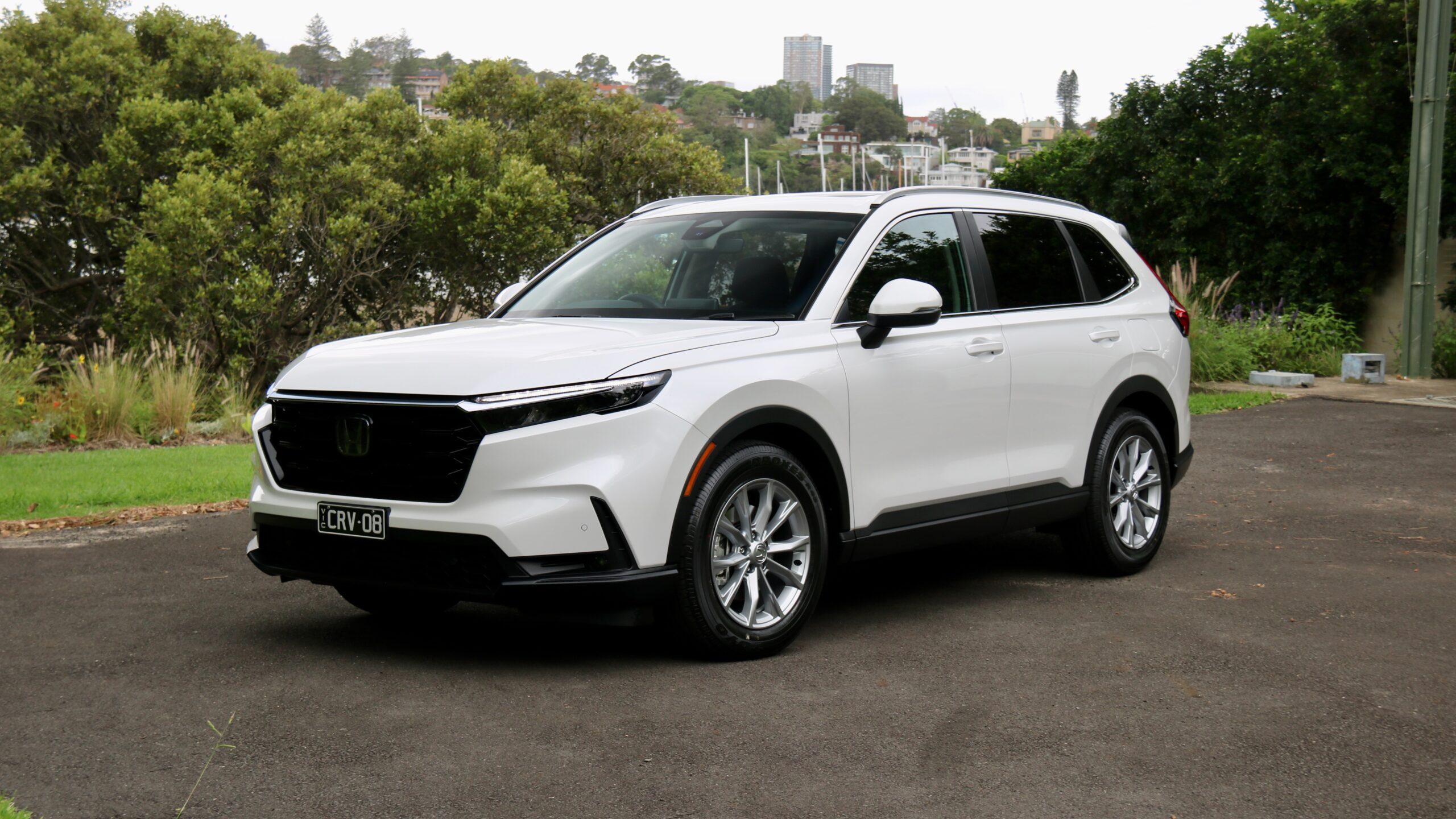
In VTi L7 form, the new CR-V offers seven seats – or, ‘5+2’ seats as some in the industry put it – against the majority of its competition, which only feature five seats. There are two models of seven-seat CR-V and the L7 is the higher-specced model to do competition against cars like the Mitsubishi Outlander, Nissan X-Trail and Mazda CX-8. Is it the ‘5+2’-seater to buy?
How much does the 2024 Honda CR-V VTi L7 cost to buy?
While the 2024 Honda CR-V range is priced from $44,000 drive away and can be had with either five- or seven-seats, or front- or all-wheel drive (depending on the model), we tested the top-spec variant that’s available with seven seats: the VTi L7, which is priced at $53,000 drive away nationwide. For reference, only two models sit above the VTi L7: the five-seat all-wheel drive VTi LX and the e:HEV RS hybrid.
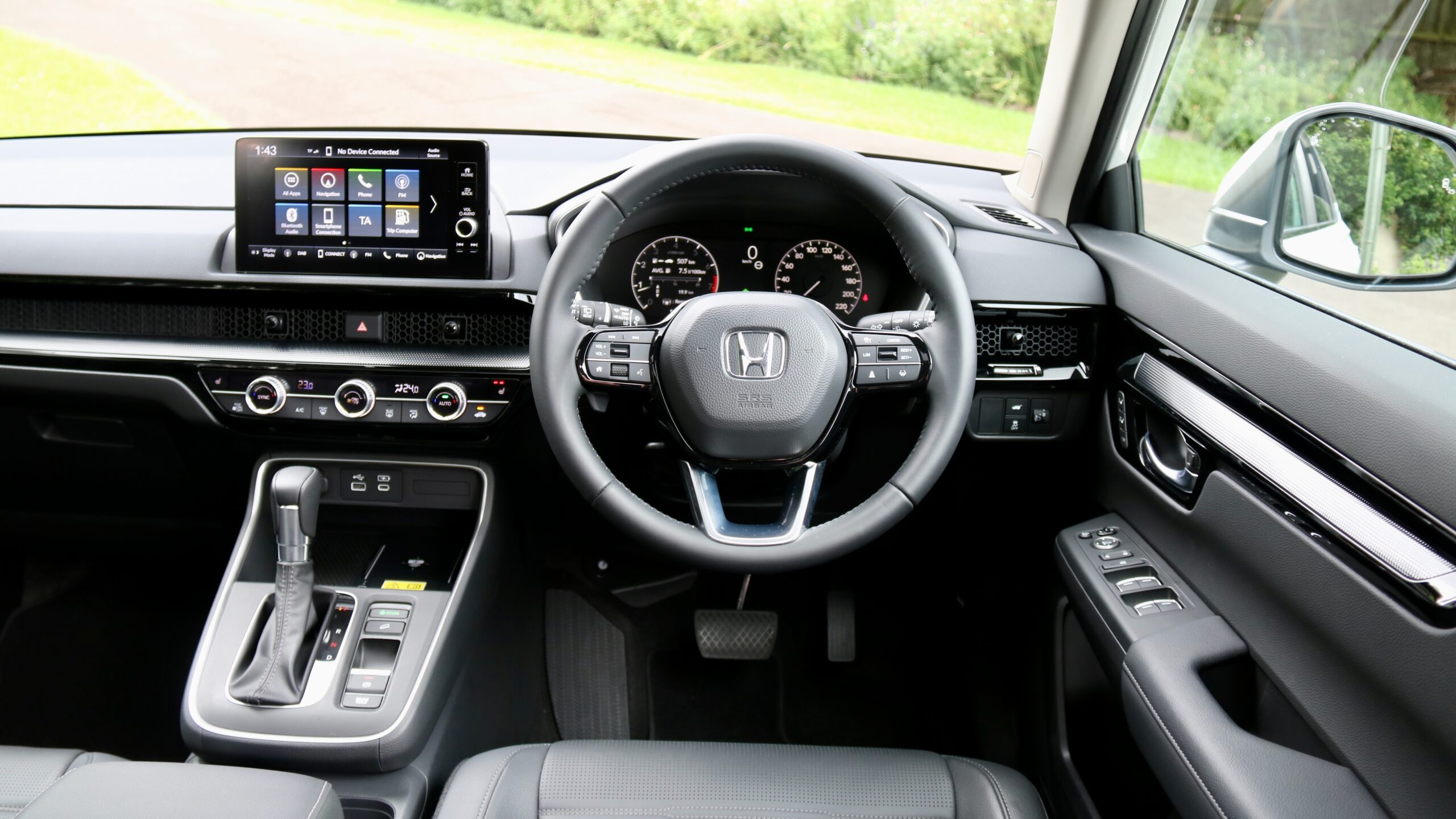
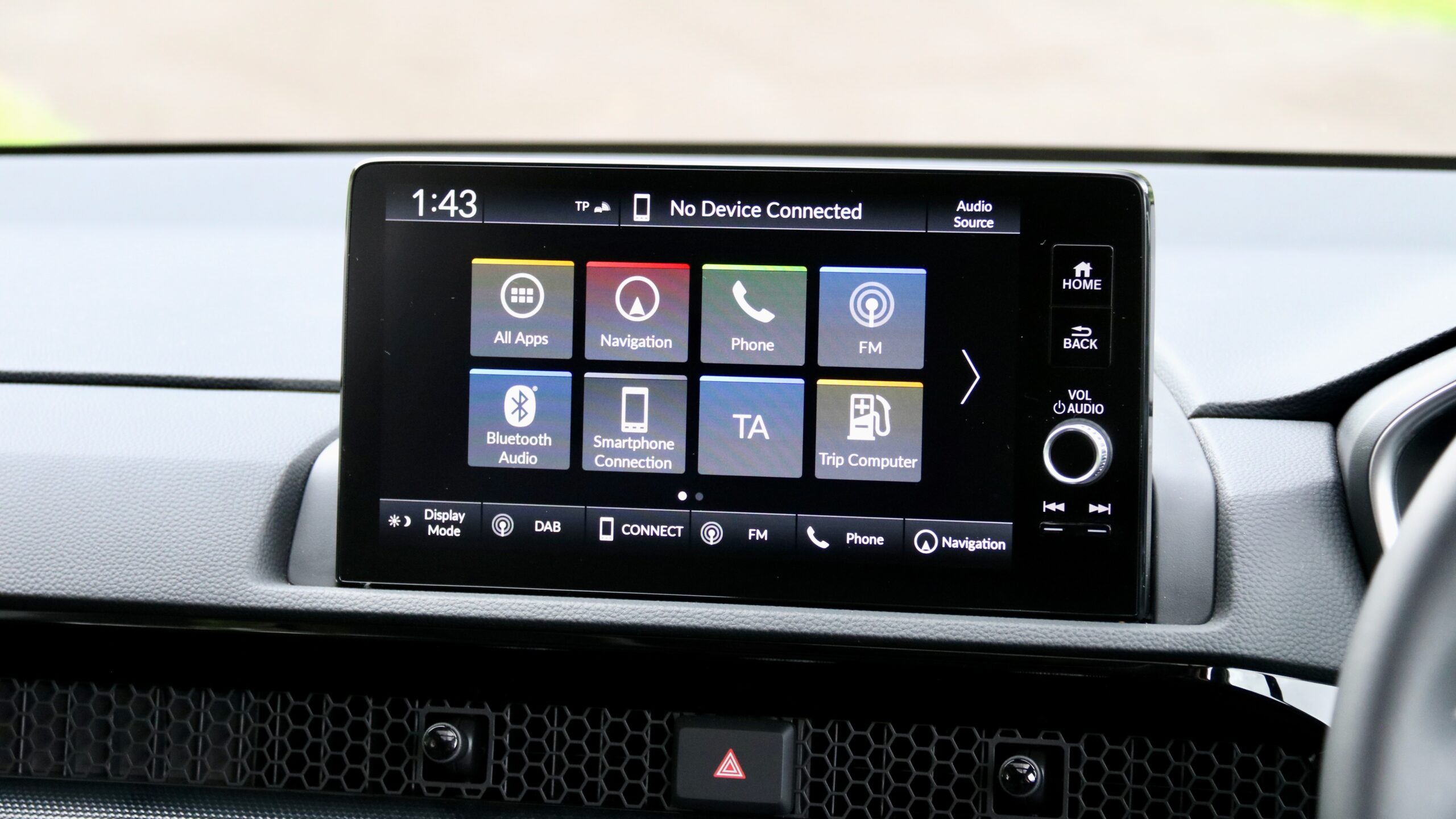
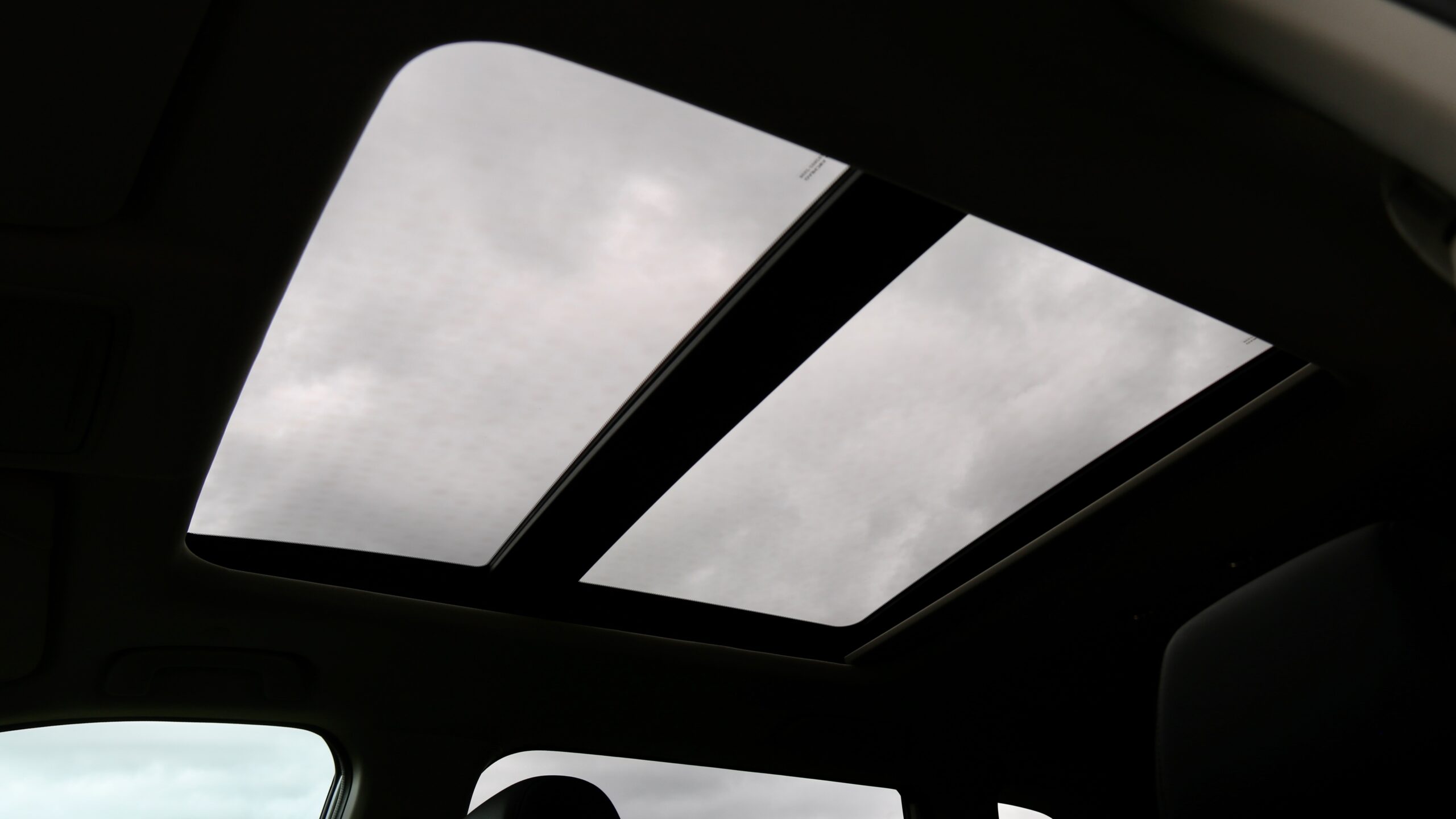
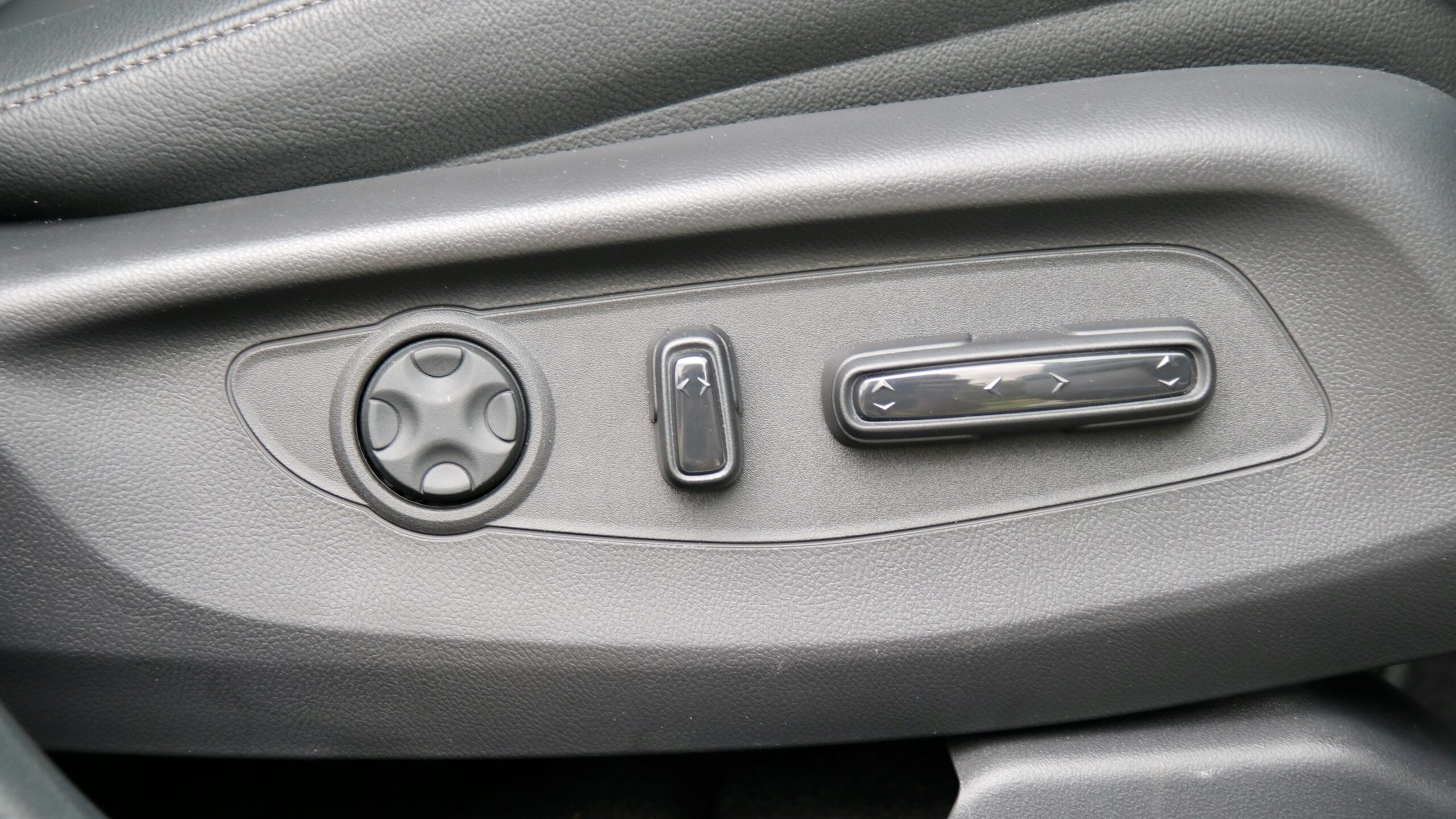
CR-V VTi L7 standard equipment:
- 18-inch alloy wheels with a space-saver spare wheel
- Dusk- and rain-sensing automatic all-LED exterior lighting
- Rain-sensing automatic wipers
- Keyless entry and push button start
- Heated and electric-folding mirrors
- Panoramic sunroof
- Roof rails
- Rear privacy glass
- Leather-wrapped steering wheel (with paddle shifters) and gearknob
- Leather upholstery
- Electric front seat adjustment (driver: 12-way with memory, front passenger: 4-way)
- Heated front seats
- Tri-zone climate control with vents in the roof for rear passengers
- 7.0-inch digital driver’s display
- 9.0-inch touchscreen with ‘Honda Connect’ connected services
- Wireless Apple CarPlay and wired Android Auto
- AM/FM/DAB+ digital radio
- Satellite navigation
- Eight-speaker sound system
- 4x USB-C charging ports
- Wireless phone charger
CR-V VTi L7 safety equipment:
- 11 airbags (including centre, knee and rear side units)
- Auto emergency braking (AEB)
- Low-speed rear automatic braking
- Lane keeping assistance with lane departure warning
- Auto high beam
- Blind-spot monitoring with rear cross-traffic alert
- Adaptive cruise control with traffic jam assist
- Adaptive lane guidance
- Driver attention monitoring
- Traffic sign recognition
- Tyre pressure monitoring
- Alarm
- Front and rear parking sensors
- Reversing camera
The current-generation CR-V is yet to be tested by either ANCAP or Euro NCAP for a safety rating.
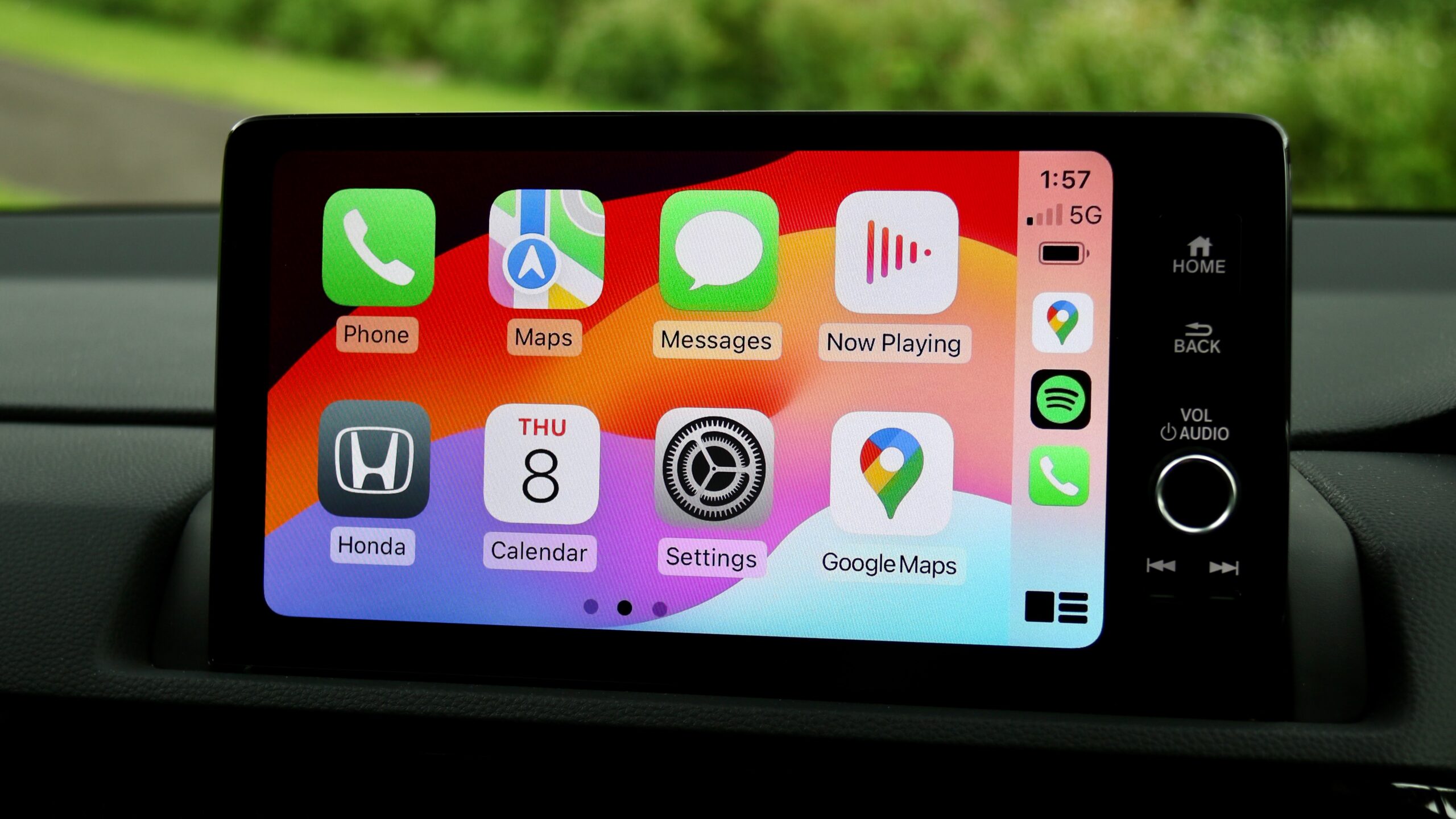
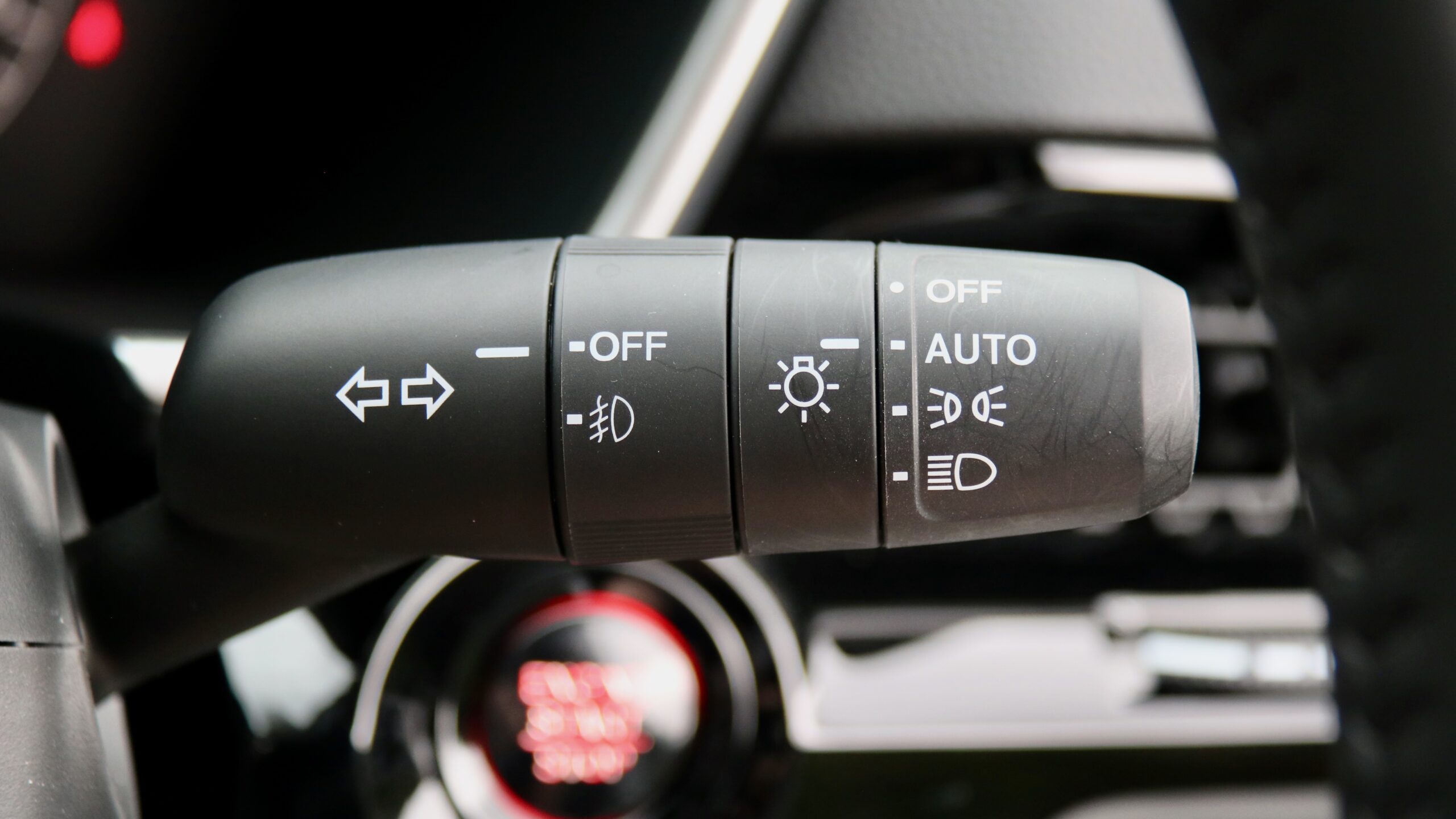
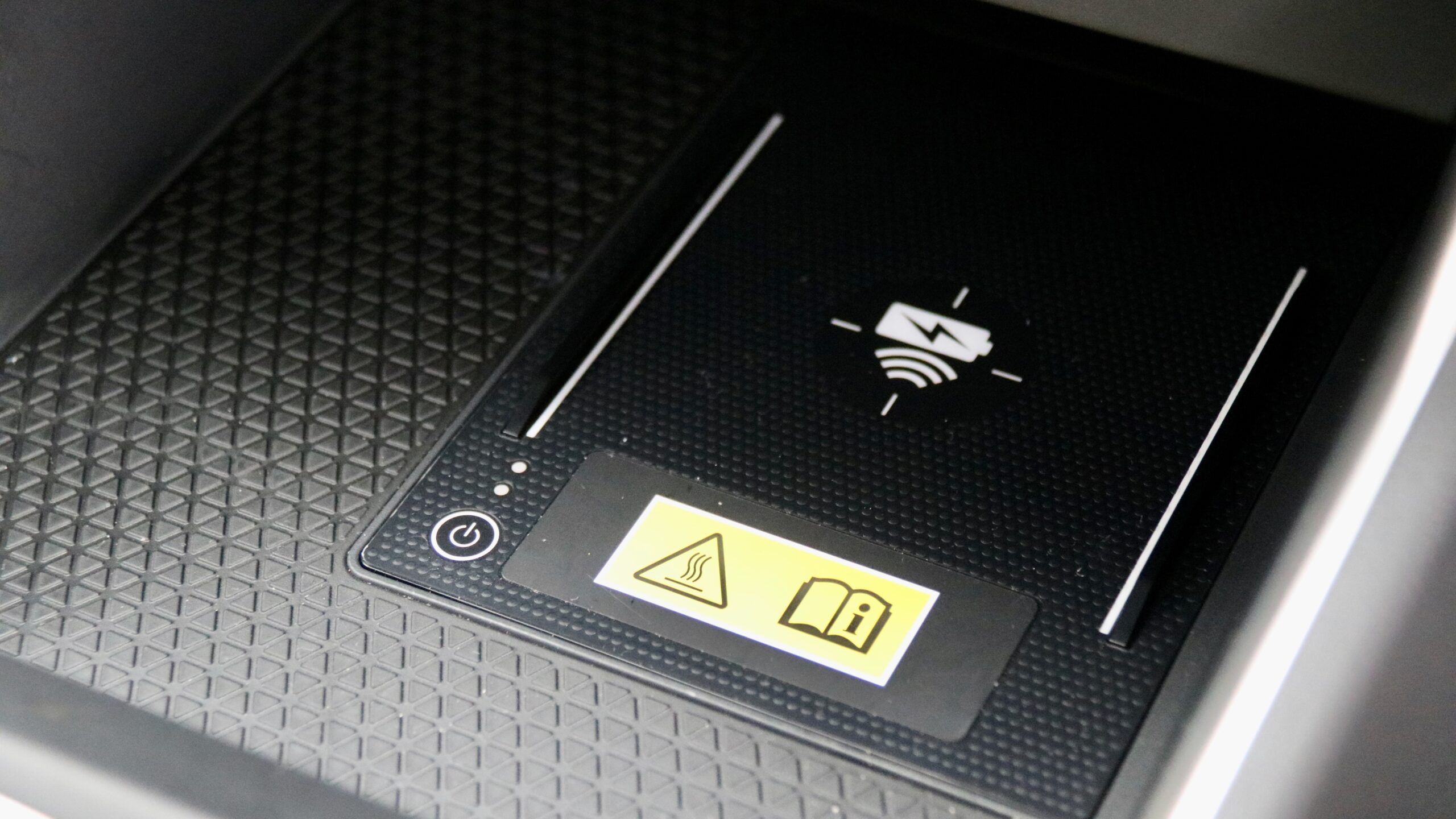
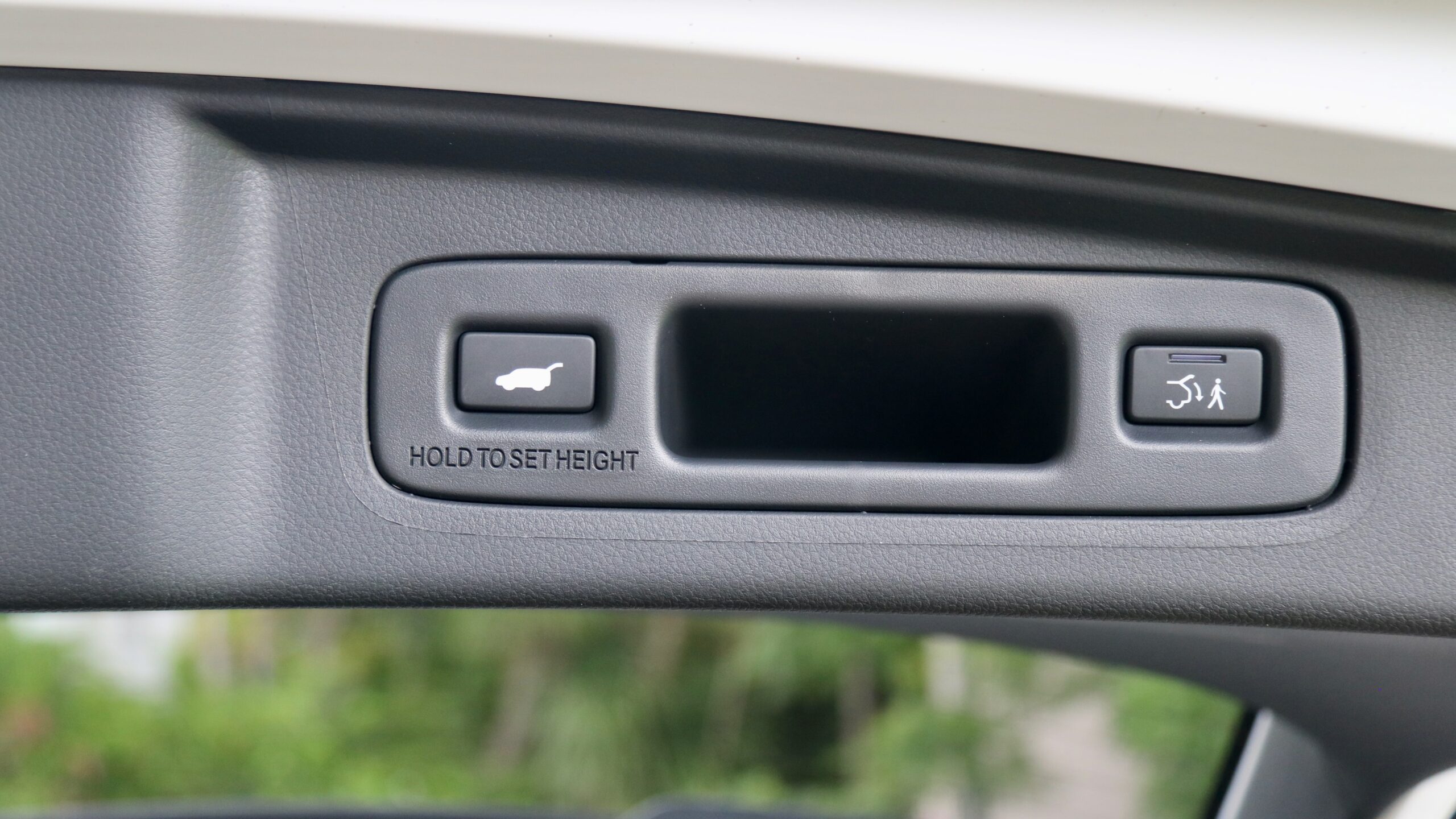
CR-V VTi L7 colour range:
- Ignite Red metallic
- Platinum White pearlescent (on our test car)
- Lunar Silver metallic
- Meteoroid Grey metallic
- Crystal Black pearlescent
- Canyon River Blue metallic
All the CR-V’s colour options are included in the price. The only interior choice for the CR-V VTi L7 is black leather upholstery.
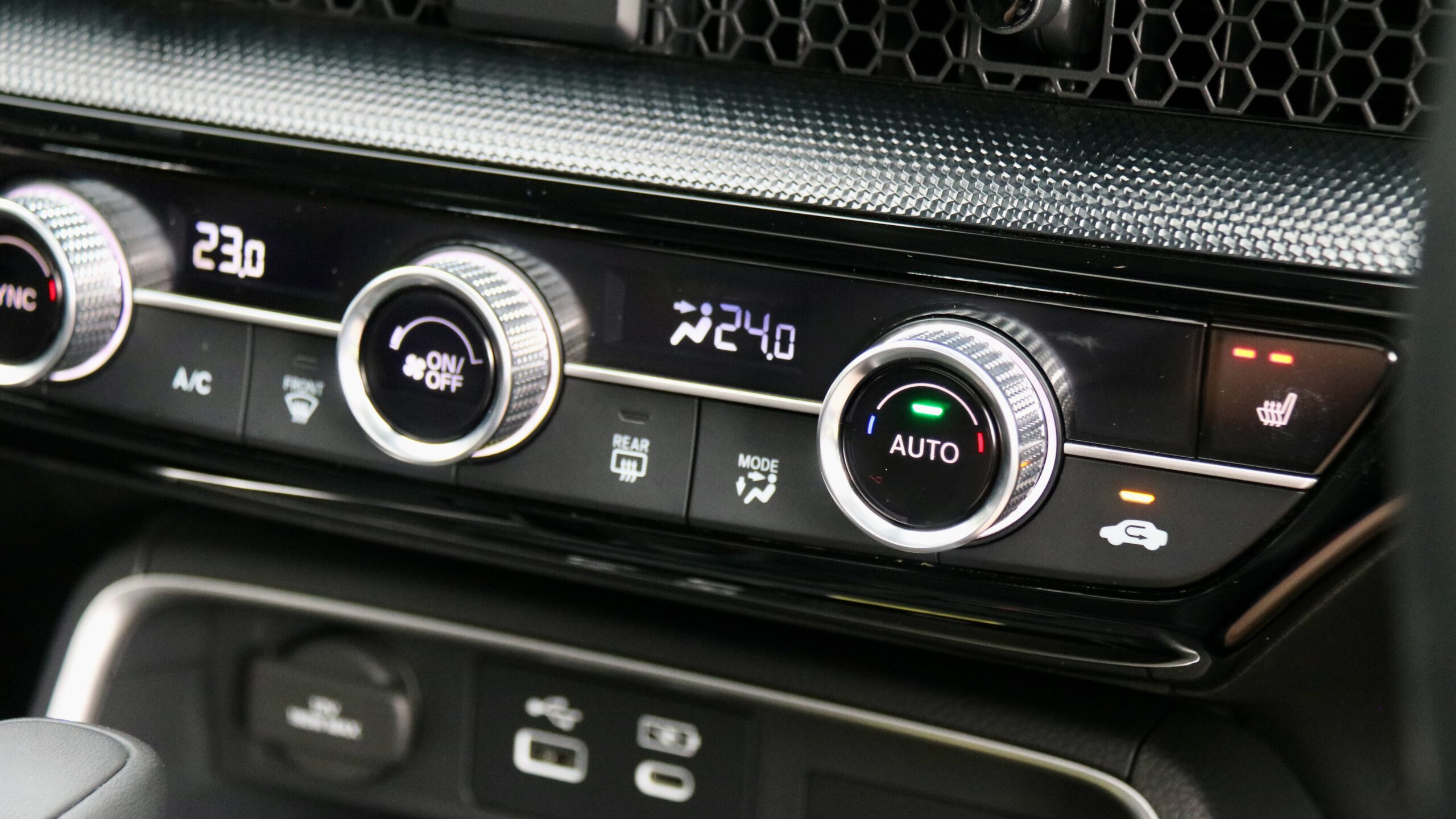
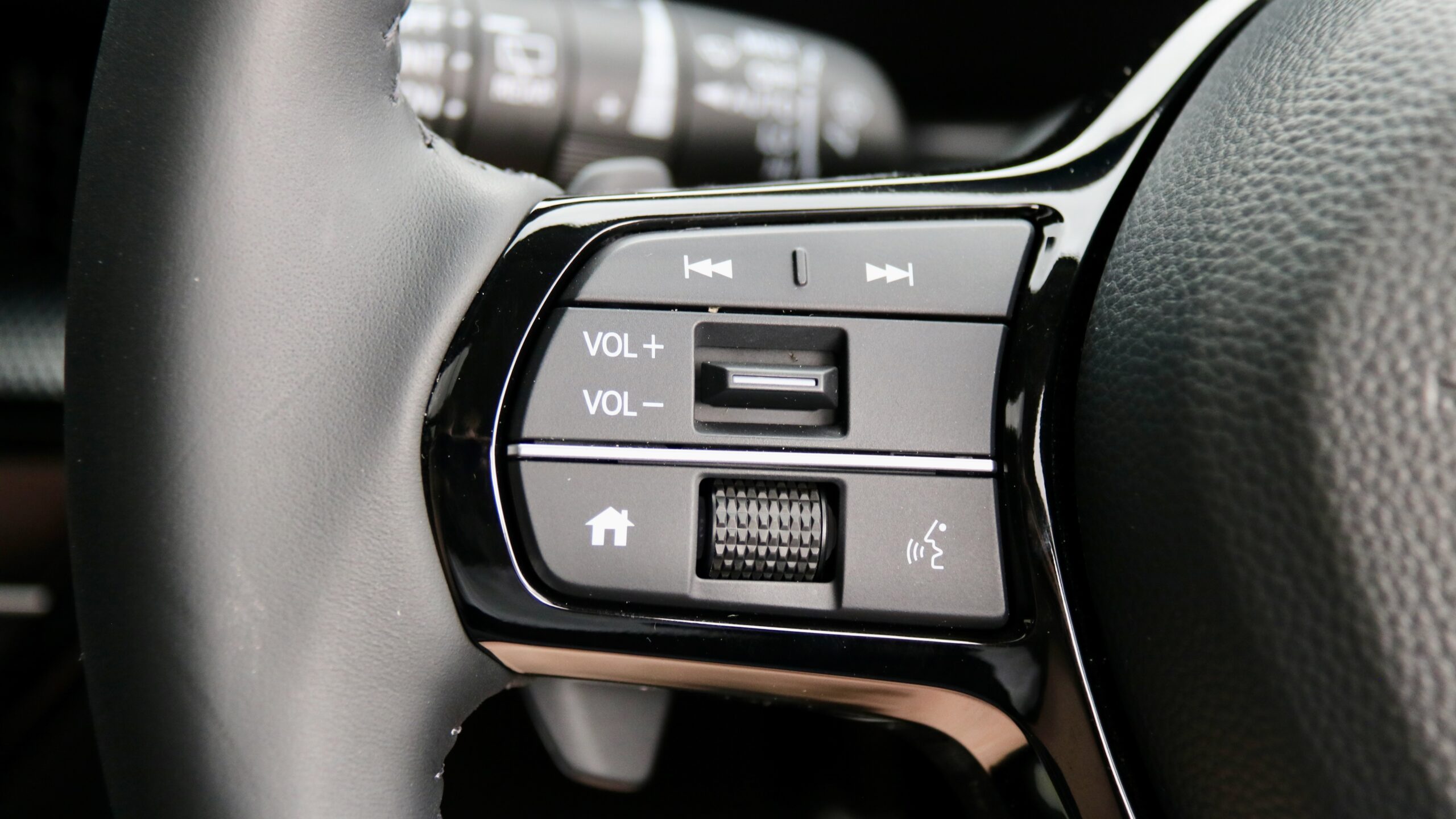
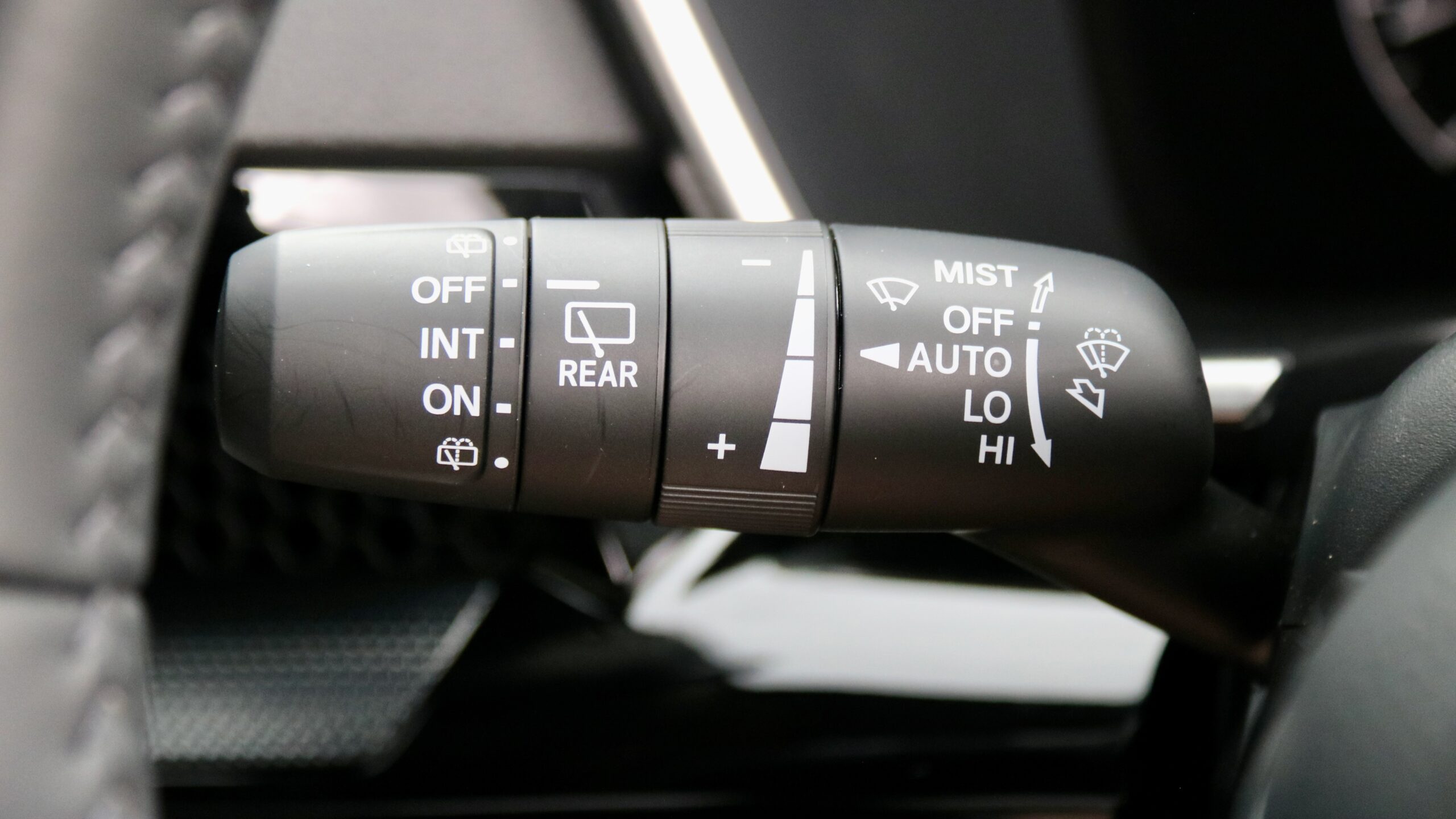
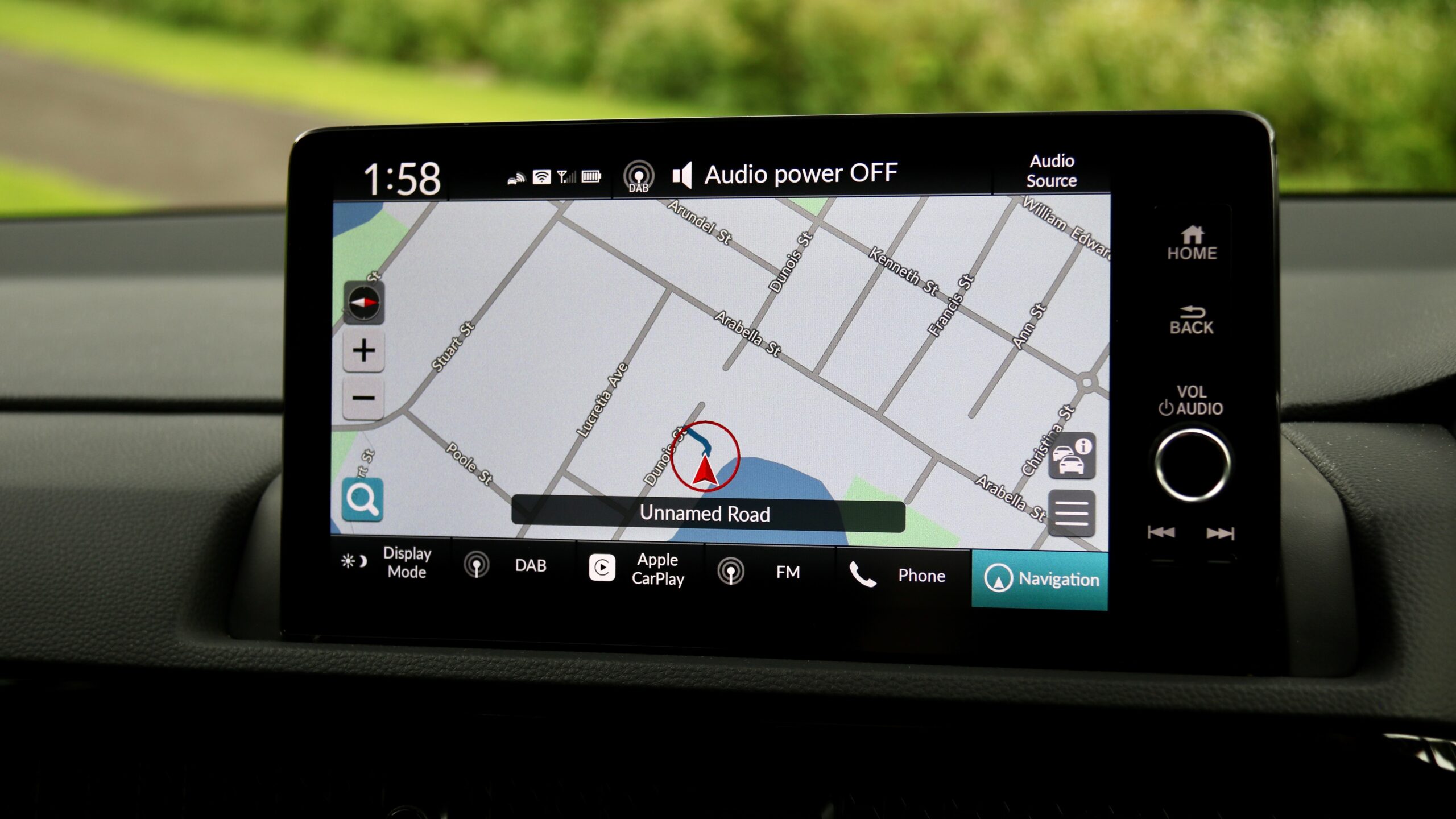
We consider the Mitsubishi Outlander Aspire ($49,240 drive away for two-wheel drive or $51,860 drive away for all-wheel drive) and the Nissan X-Trail ST-L (around $51,000 drive away) to be the CR-V VTi L7’s biggest rivals. Both are seven-seaters, like the Honda, though the Outlander. Over the Honda, the $3,760 less expensive Outlander adds larger 20-inch wheels, matrix adaptive high beam, a larger touchscreen, a digital driver’s display, a head-up display and a 360-degree camera. The Mitsubishi also gives buyers a choice of either front- or all-wheel drive. For the extra coin, the Honda adds a panoramic sunroof, an extra climate zone, full leather trim, live services and three extra airbags.
Against the X-Trail, more expensive Honda gives buyers a panoramic sunroof, a larger touchscreen with live services and automatic wipers. However, the X-Trail is only available with all-wheel drive (which some buyers want and will exclude the Honda immediately because of that) and over the CR-V, it adds more airbags and a 360-degree camera. But both the Outlander and X-Trail prove that the Honda could be better value for money, in our opinion.
How fuel efficient is the 2024 Honda CR-V VTi L7?
Under the bonnet of the 2024 Honda CR-V VTi L7 is a familiar engine: Honda’s turbocharged 1.5-litre four-cylinder donk that makes 140kW of power (at 6,000rpm) and 240Nm of torque (between 1,700rpm and 5,000rpm). As with all other CR-V models, that’s mated to a CVT automatic transmission, while as the VTi L7 is a seven-seater, that means that it’s front-wheel drive only. Both the Outlander and X-Trail use a non-turbocharged 2.5-litre four-cylinder petrol engine that makes 135kW of power (at 6,000rpm) and 244Nm of torque (at 3,600rpm) and a CVT automatic transmission.
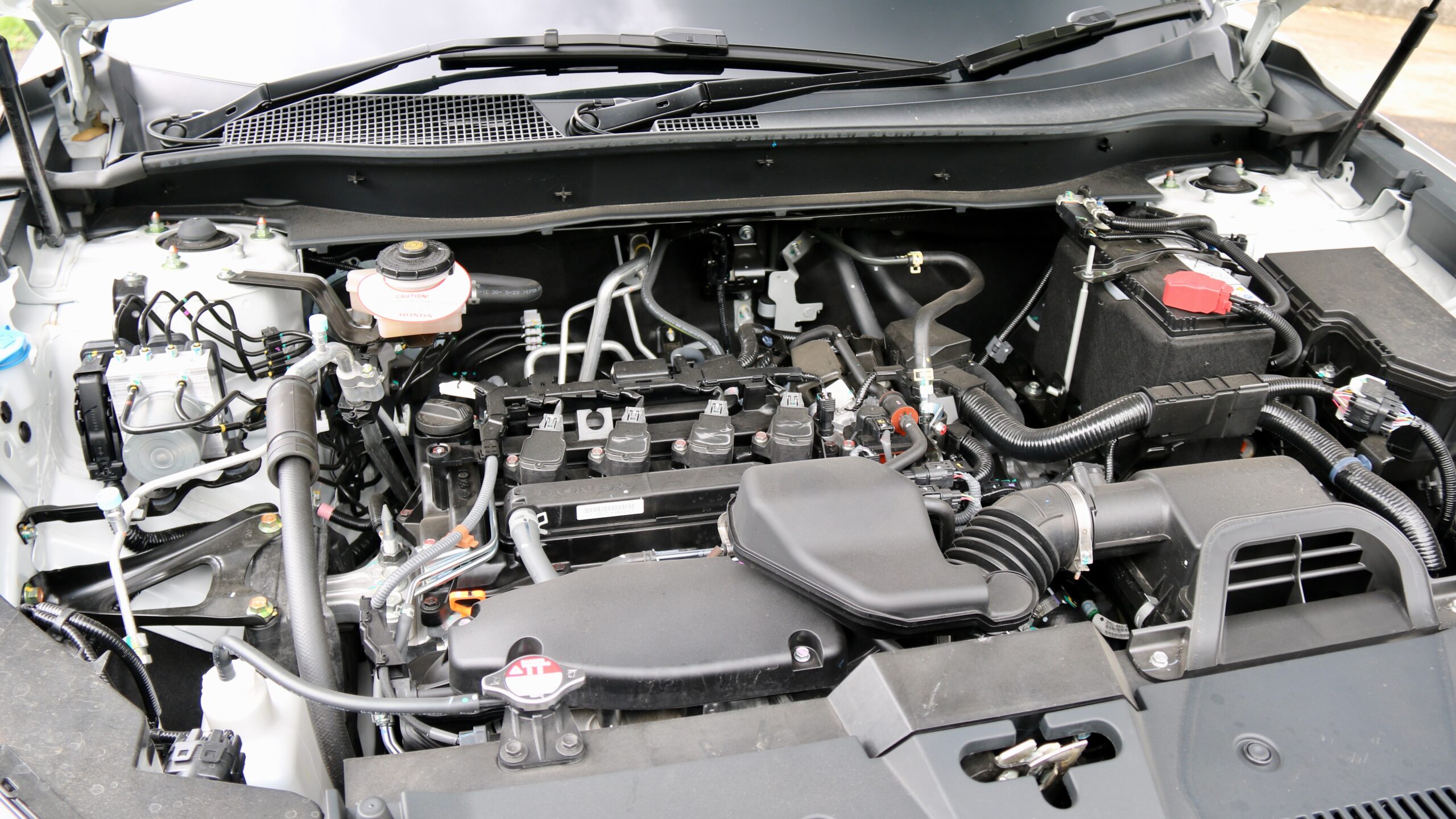
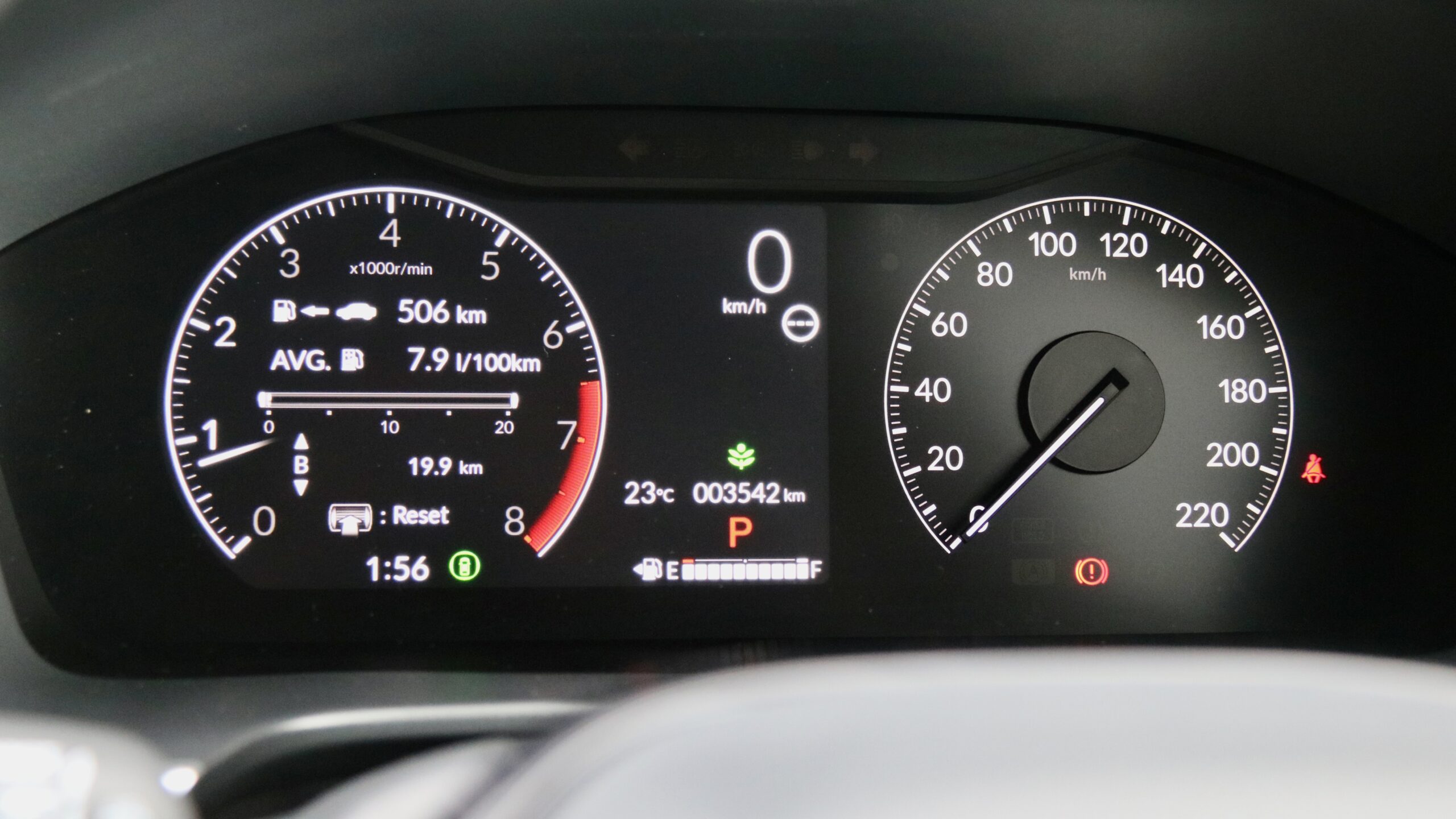
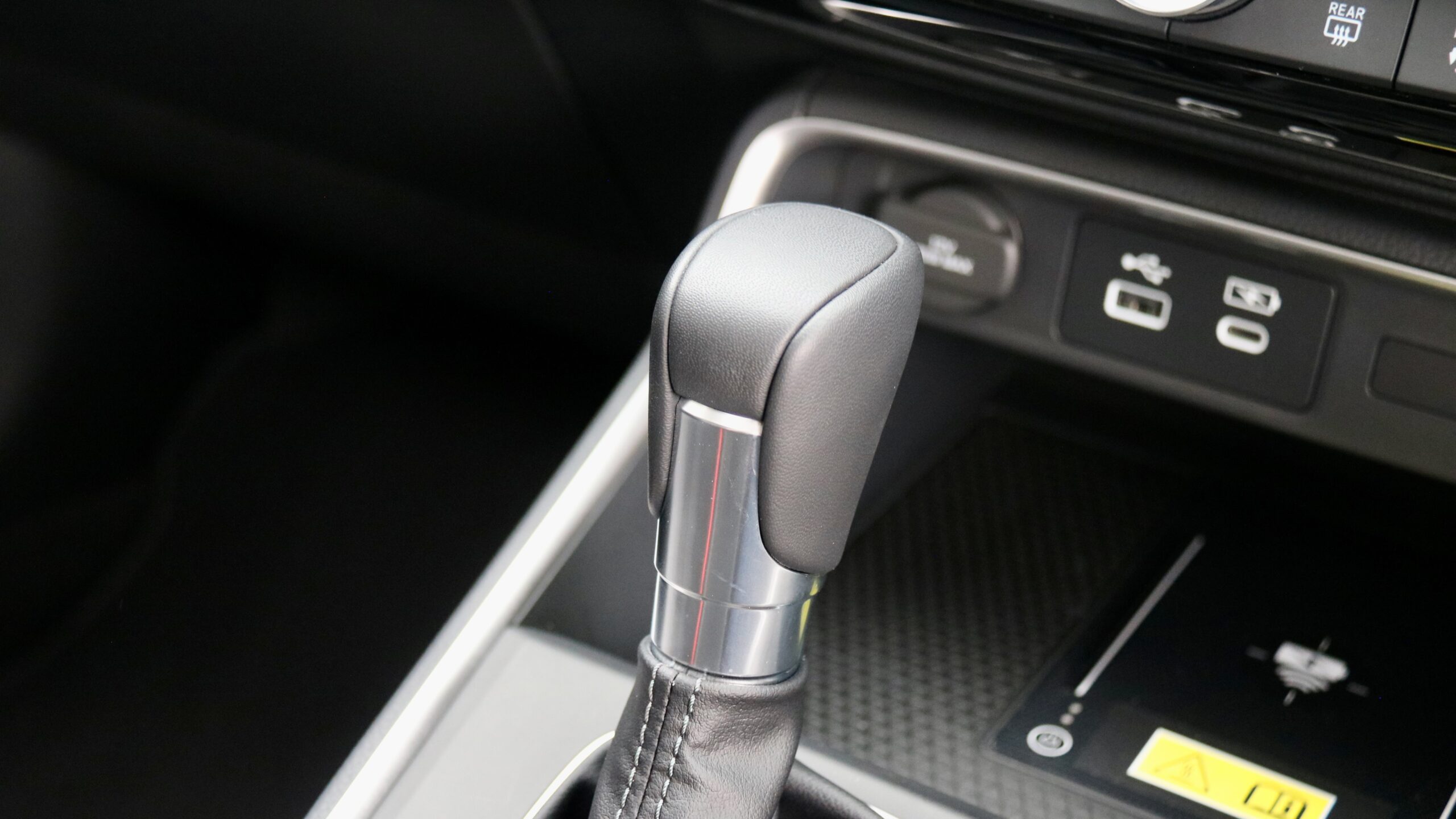
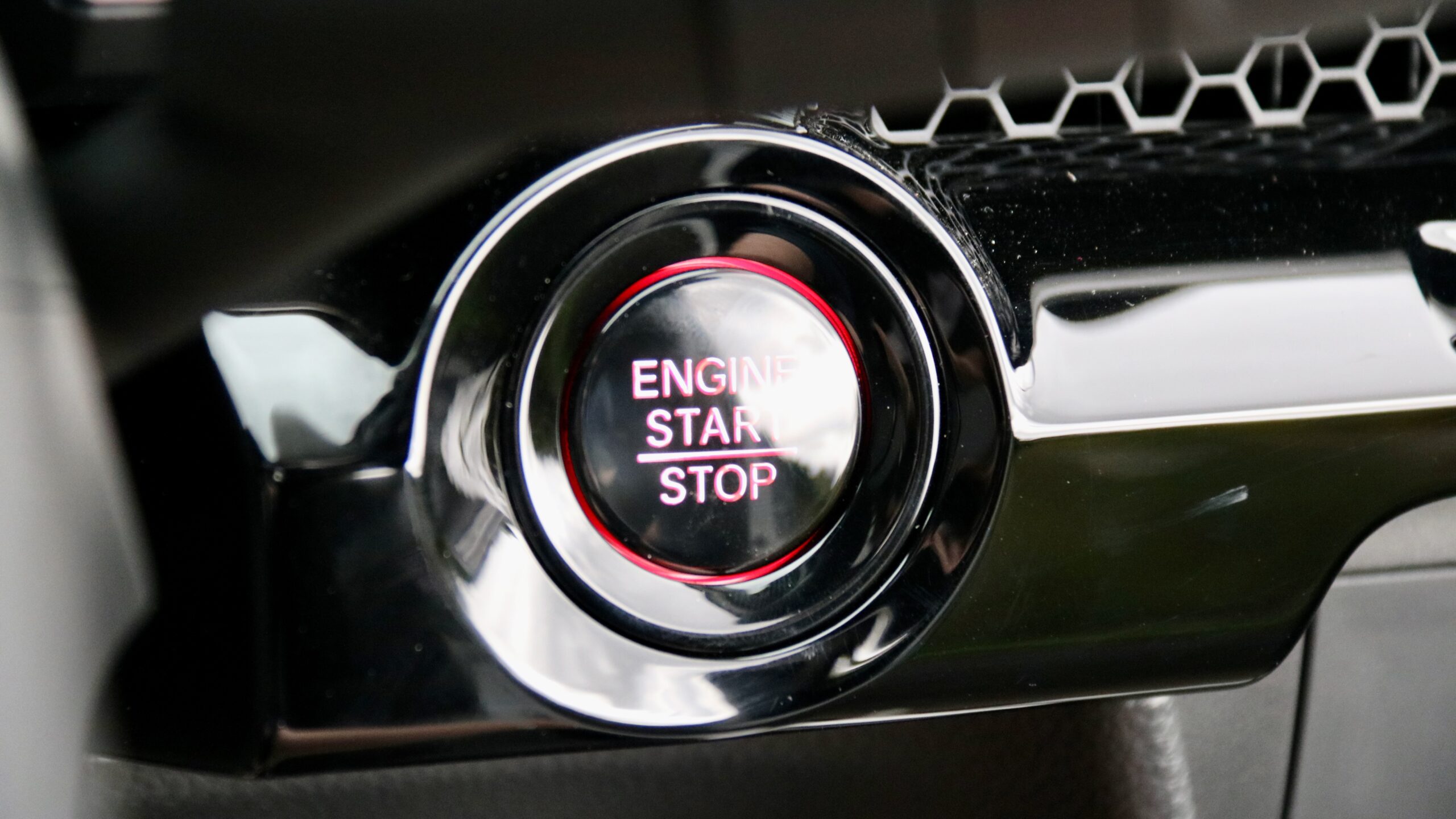
Against the shared engine in both the Outlander and X-Trail, the Honda’s turbocharged engine is refined and punchy. While its rivals produce more torque, the CR-V’s peak torque hits at less than half the revs (1,700rpm versus 3,600rpm) and lasts all the way until 5,000rpm as well. Because of that, there’s no need to rev the CR-V and it accentuates the relaxing driving experience.
The only transmission available in the petrol CR-V is a CVT automatic, which is fairly standard as far as CVT automatics go. It gives off a slight rubber-brand dynamic, though there is a reasonable attempt at ‘stepped’ ratios for a more natural feel. Helping that further are paddle shifters for part-manual control.
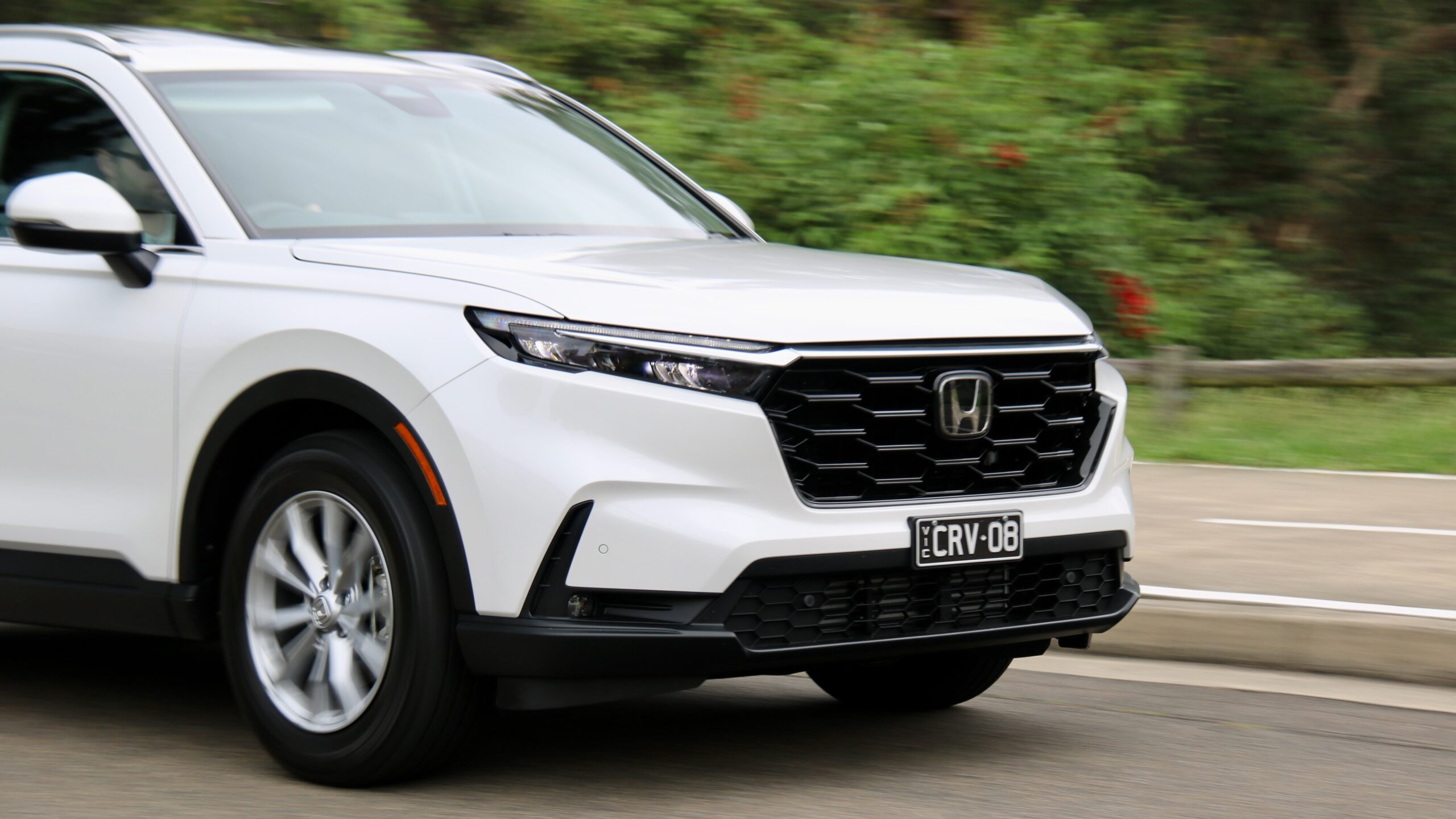
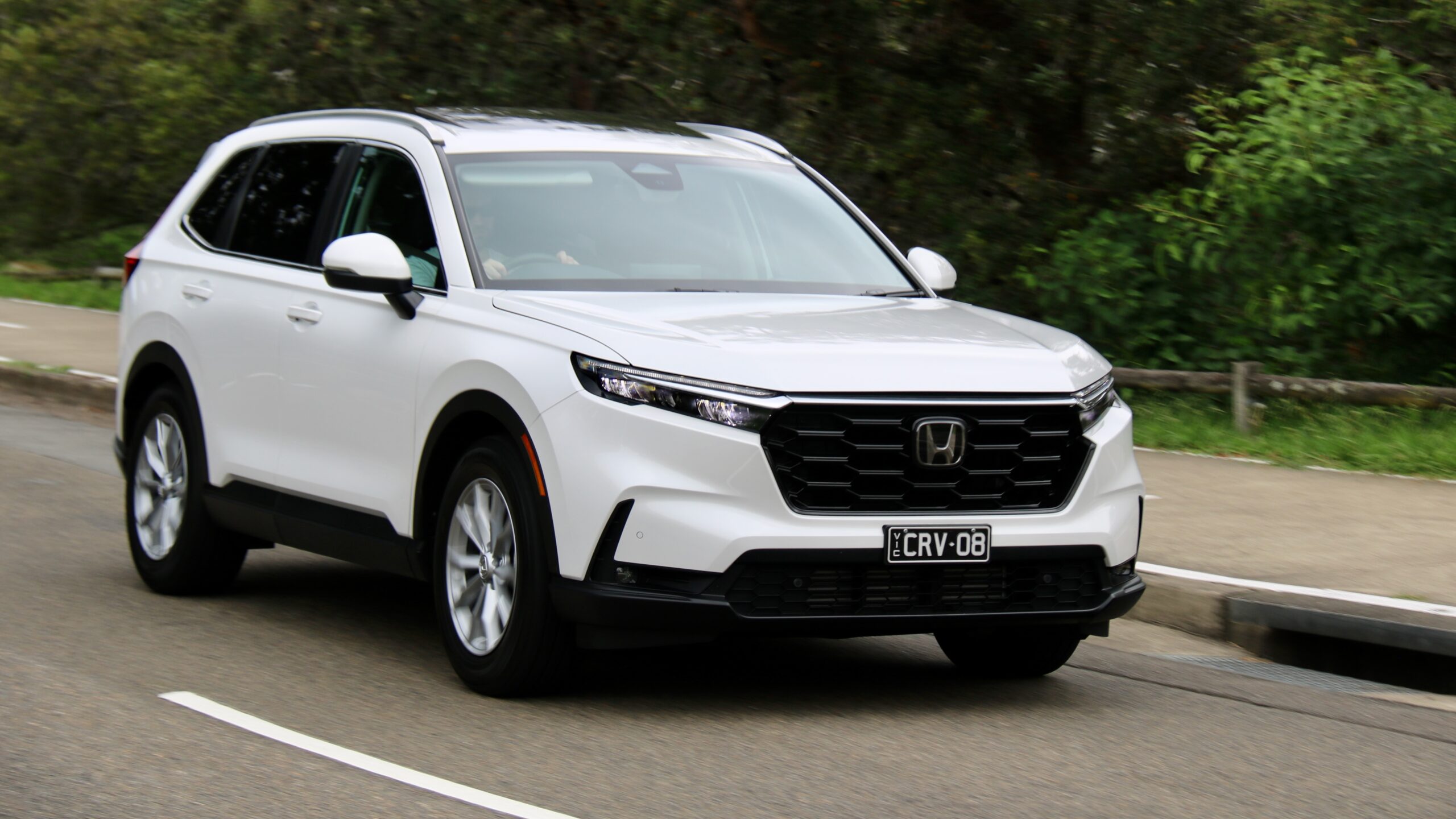
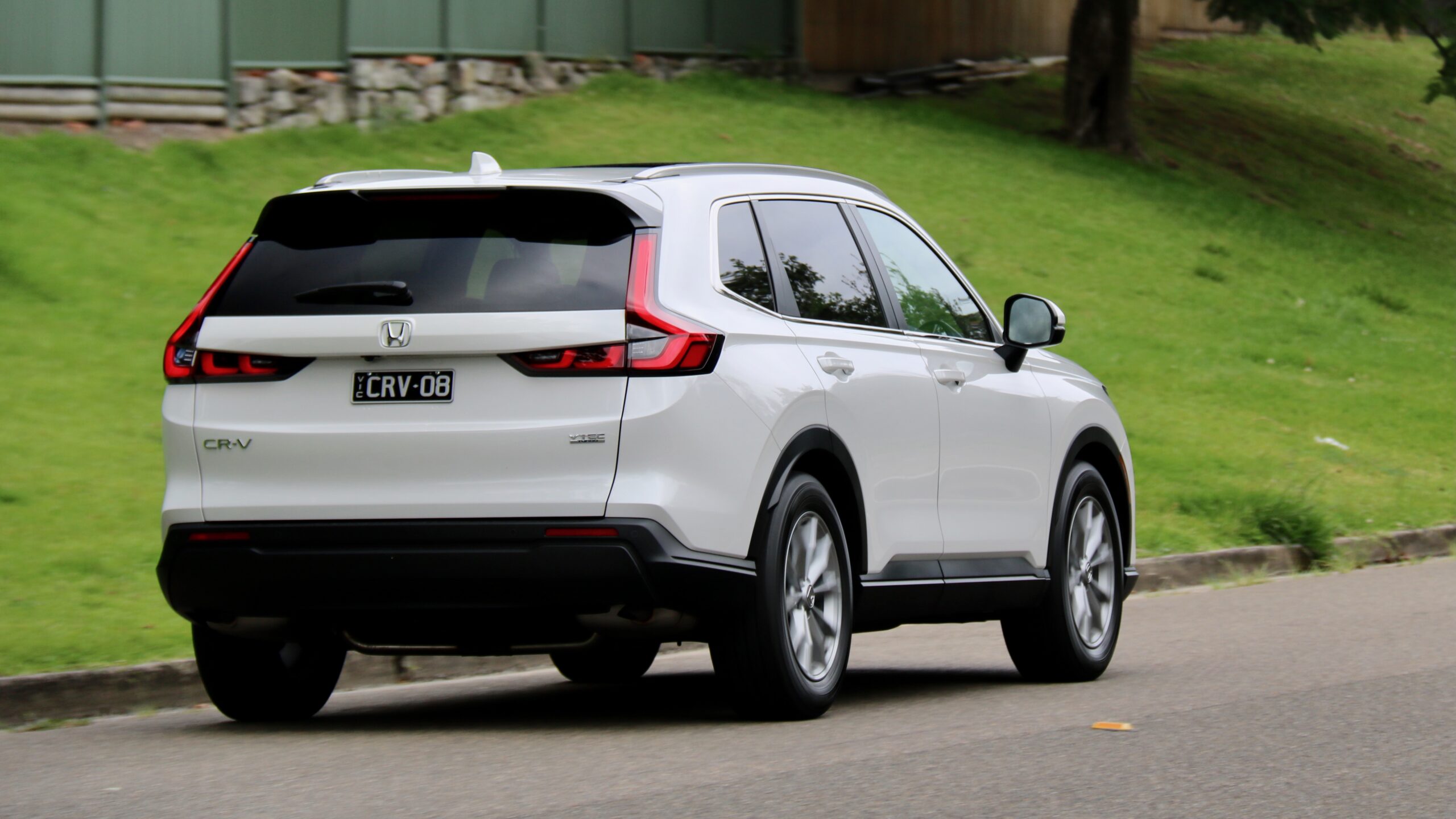
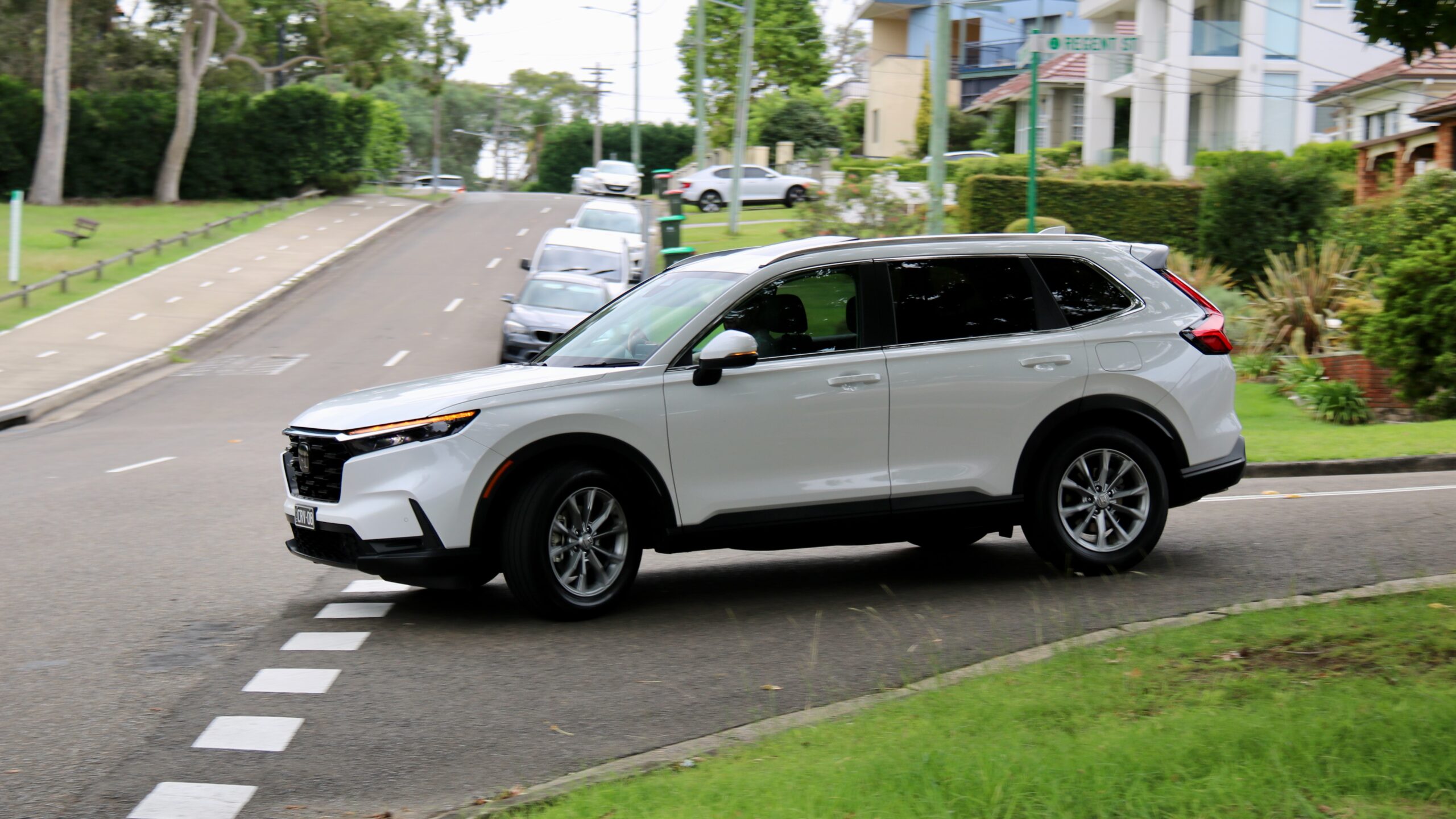
The VTi L7 is rated at 7.3L/100km on the combined fuel consumption cycle, with CO2 emissions of 167g/km – the Outlander is rated at 7.7L/100km and 174g/km and the X-Trail 0.3L/100km less. In our testing (which skewed towards urban), we recorded 9.2L/100km. The CR-V can run on 91RON regular unleaded fuel and it has a 57-litre fuel tank.
What is the 2024 Honda CR-V VTi L7 like to drive?
As with the previous-generation, the 2024 Honda CR-V VTi L7 is deeply competent to drive. It rides and handles well, its road noise levels are reasonably low, its steering is quick and nicely weighted, its visibility is excellent and its active safety equipment is well tuned and makes you feel safe on the road. Dynamically, the CR-V is solid too thanks to its good chassis and reasonable handling for a medium-plus SUV, while the quick steering adds in another element to the fun from behind the wheel.
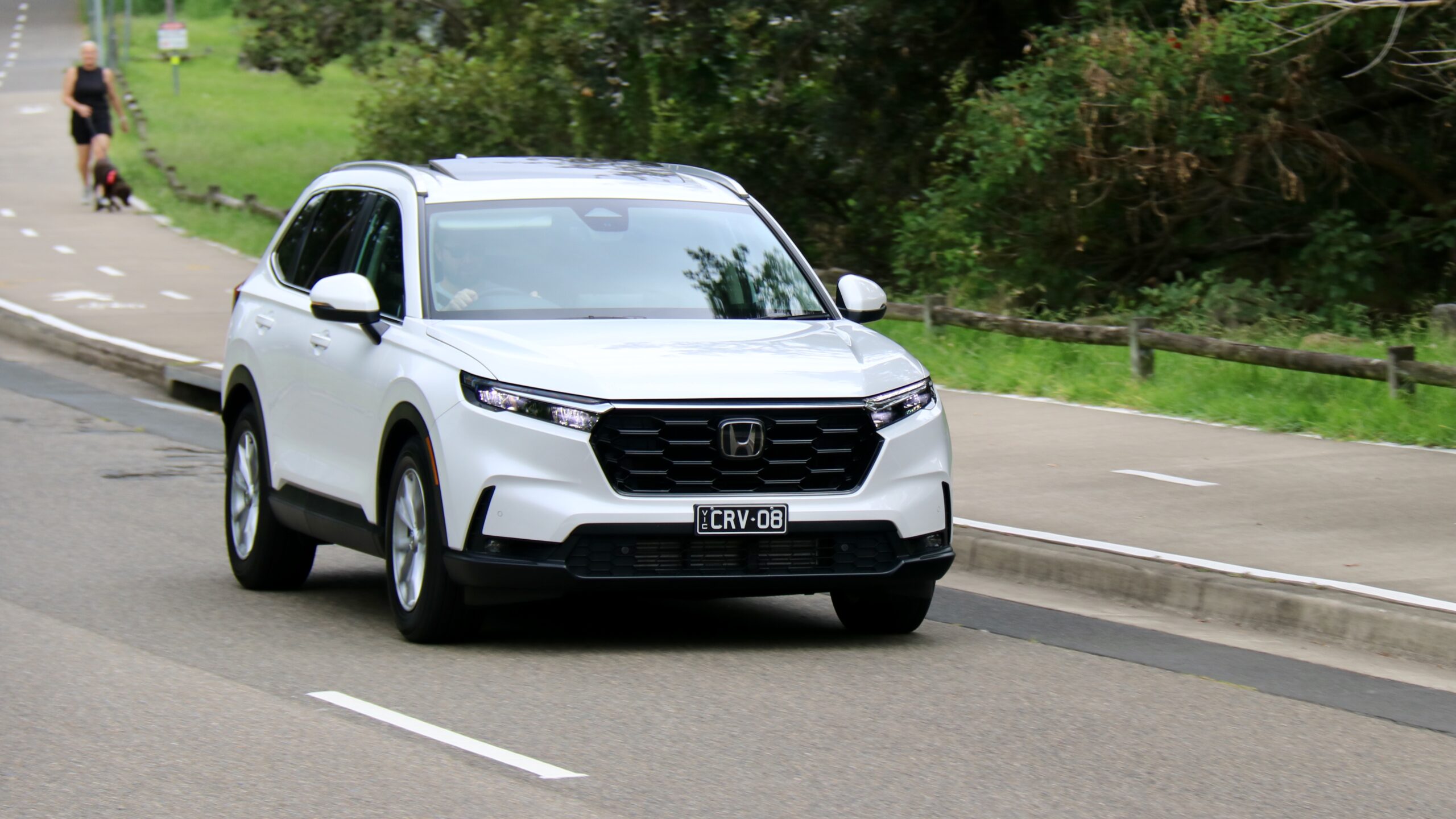
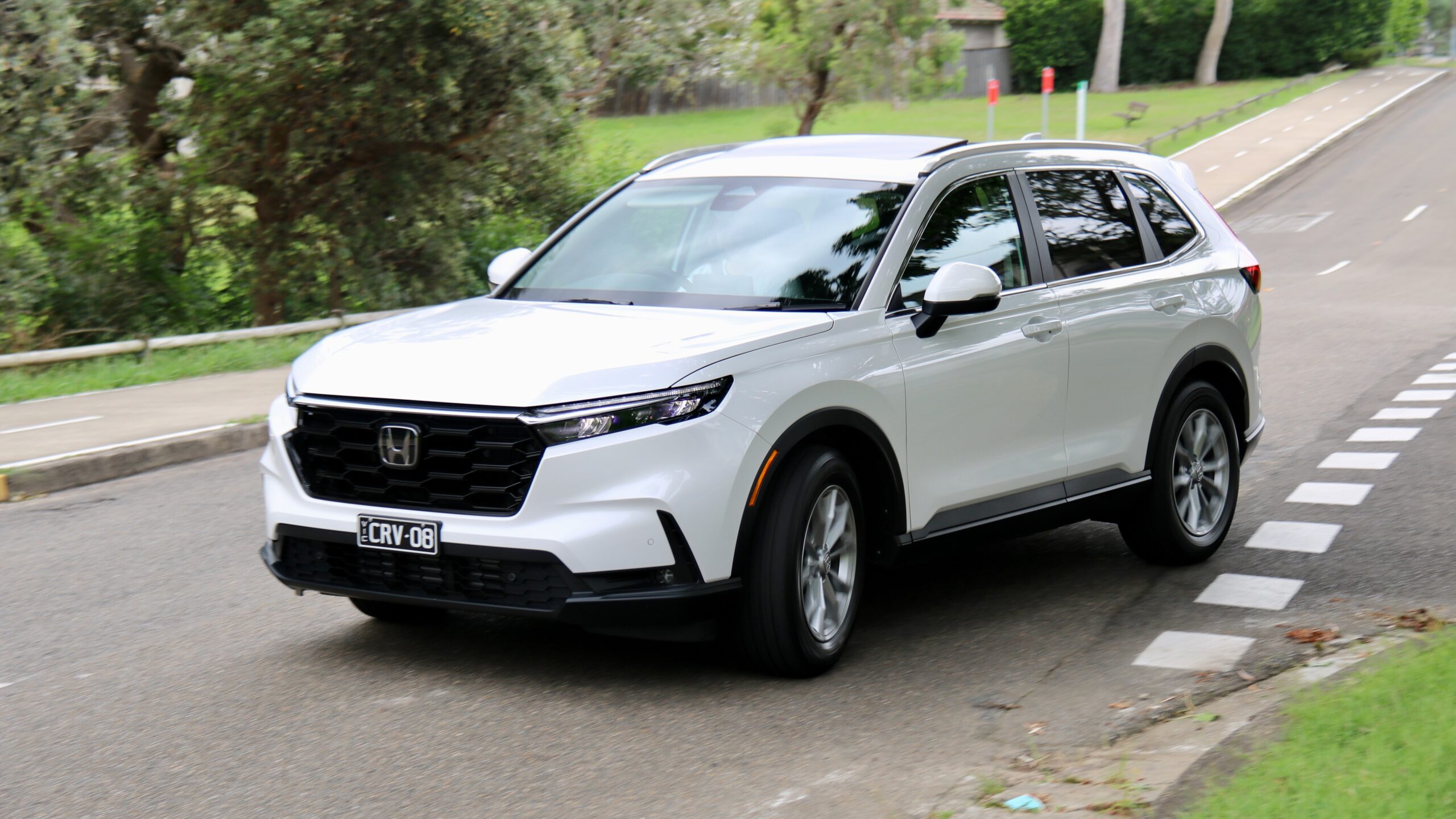
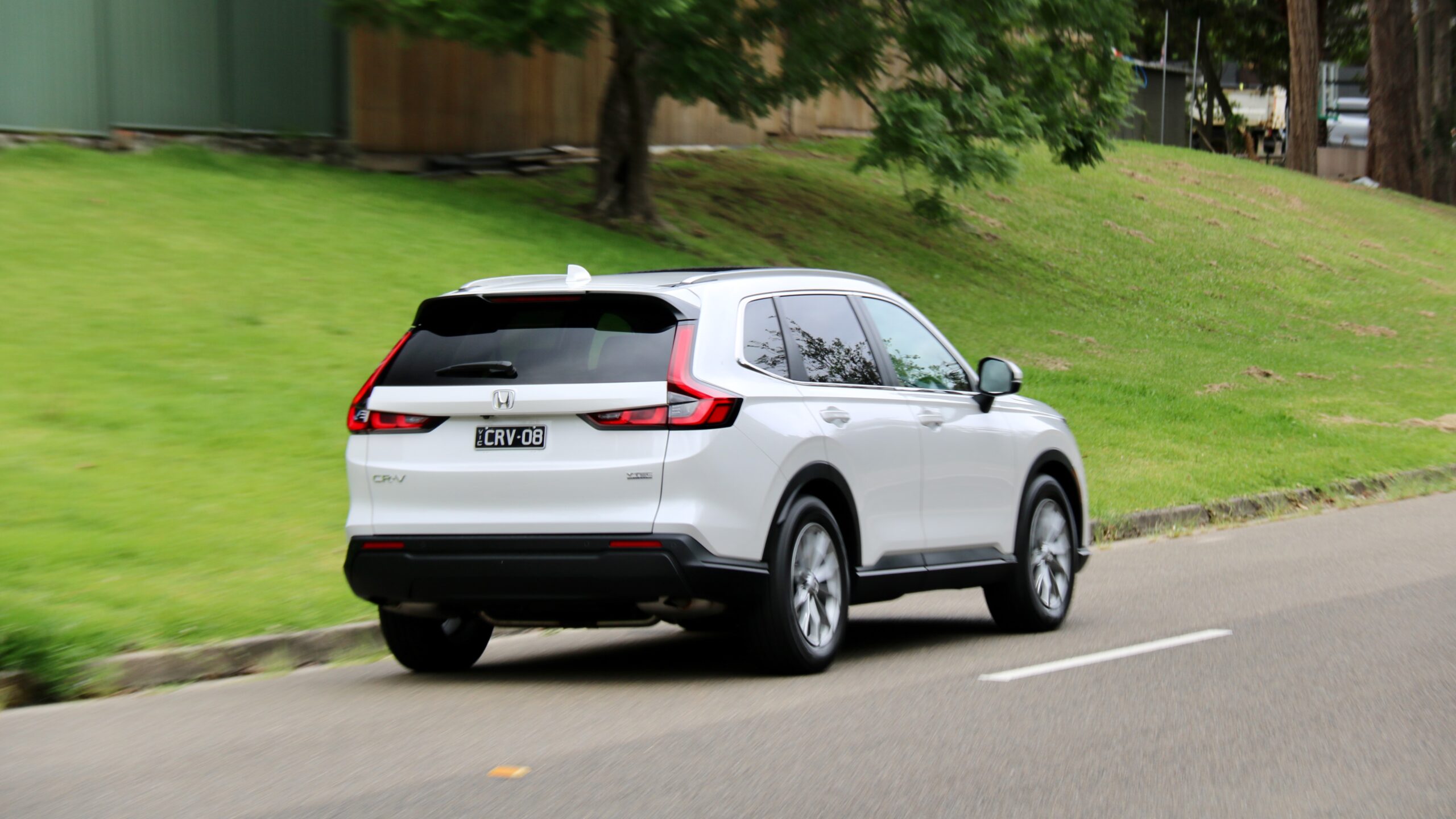
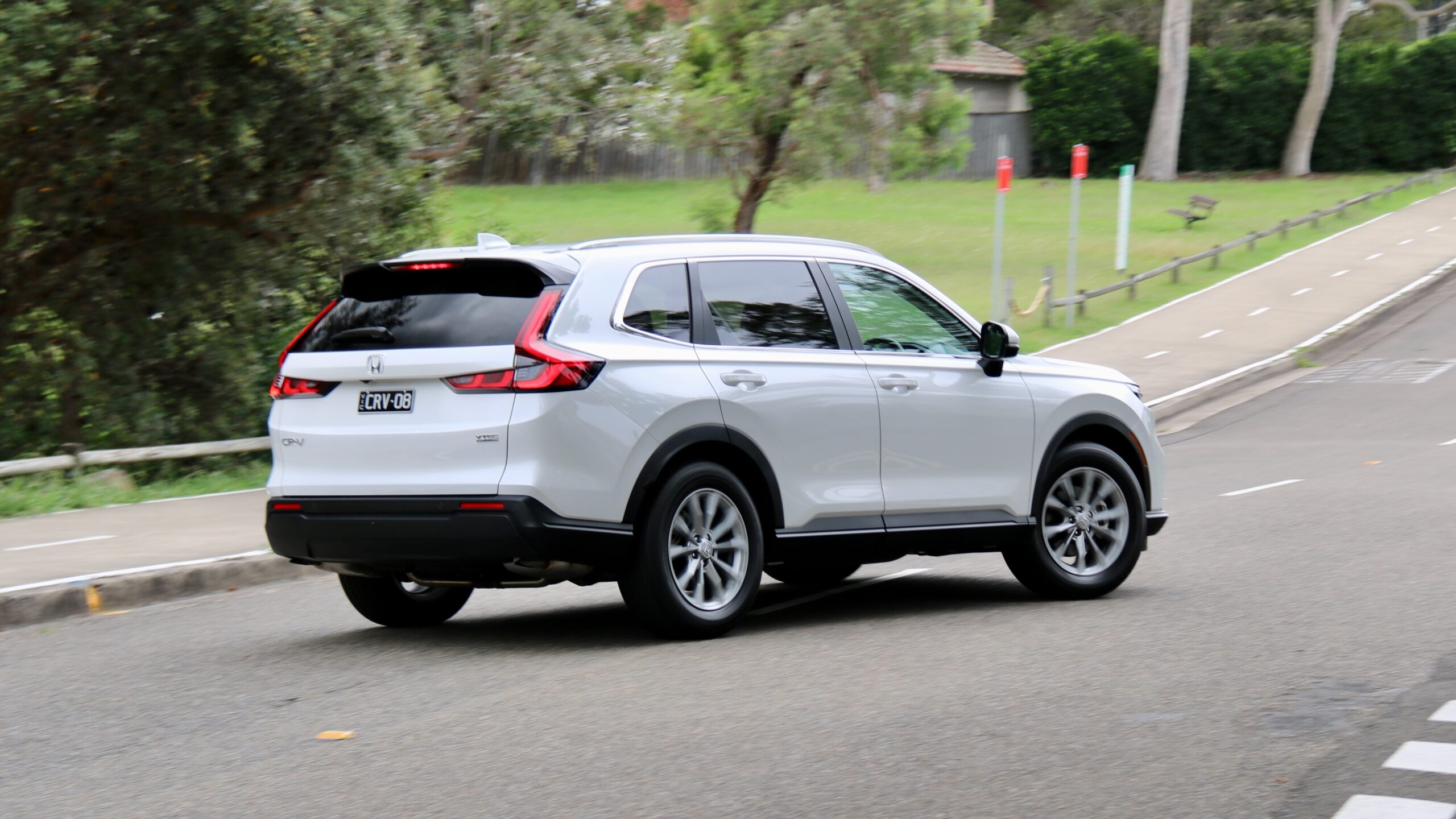
Elsewhere in the CR-V’s driving experience is good as well. The ride quality in the VTi L7 on its 18-inch wheels is pretty good – better than the heavier hybrid with its larger 19-inch wheels. As we’ve seen in other Honda models like the ZR-V, Honda’s active safety equipment is great and it all works quite well. We particularly like the Tesla-style lane view in the driver’s display when the cruise control is activated – it even shows when the car’s indicators are activated too.
How practical is the 2024 Honda CR-V VTi L7?
In a word: very. As we’ve experienced in previous-generation CR-V models, the interior of the 2024 Honda CR-V VTi L7 offers a lot of what buyers in the mid-size SUV segment are looking for. It’s quite practical with lots of clever touches, it’s good quality as you’d expect from Honda and the technology is also well integrated with large displays and solid ergonomics. Only the driver’s display really grates as it’s located quite far into the dashboard and accentuates the feeling of sitting on – not in – the seat.
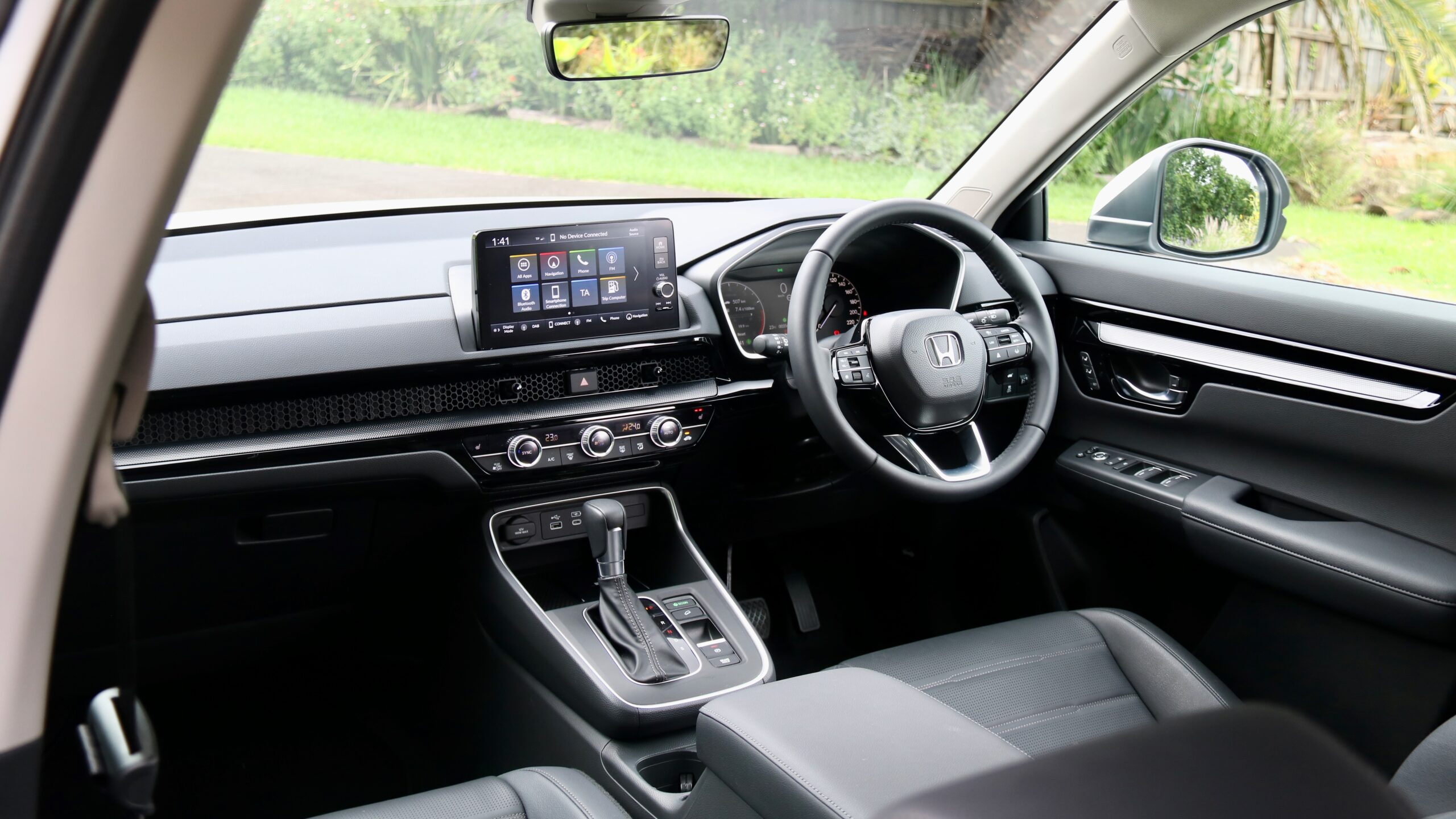
As for quality, the CR-V’s cabin is solid in the mid-size SUV segment and shades the RAV4, but the X-Trail’s mix of materials is richer, for example. Still, the tops of the dashboard and doors are covered in soft touch materials, while the leathers and switchgear used throughout the cabin feel good to touch as well – we’d just like to see a soft centre console panel like the ZR-V as it would add to the quality feeling and would give more comfort to knees resting.
As for practicality, it’s clear that Honda has thought the CR-V’s cabin through. The door bins, for example, aren’t huge but they have sectioned parts just for drink bottles and the bin underneath the centre armrest is massive. The cupholders in the front are deep while there’s a tray behind them for a wallet, and a big tray underneath the centre console with storage. It also features a wireless phone charger, but it didn’t work well for my iPhone 15 Pro Max – we’d love to see a Hyundai-style grip installed so that phones with big cameras can charge effectively.
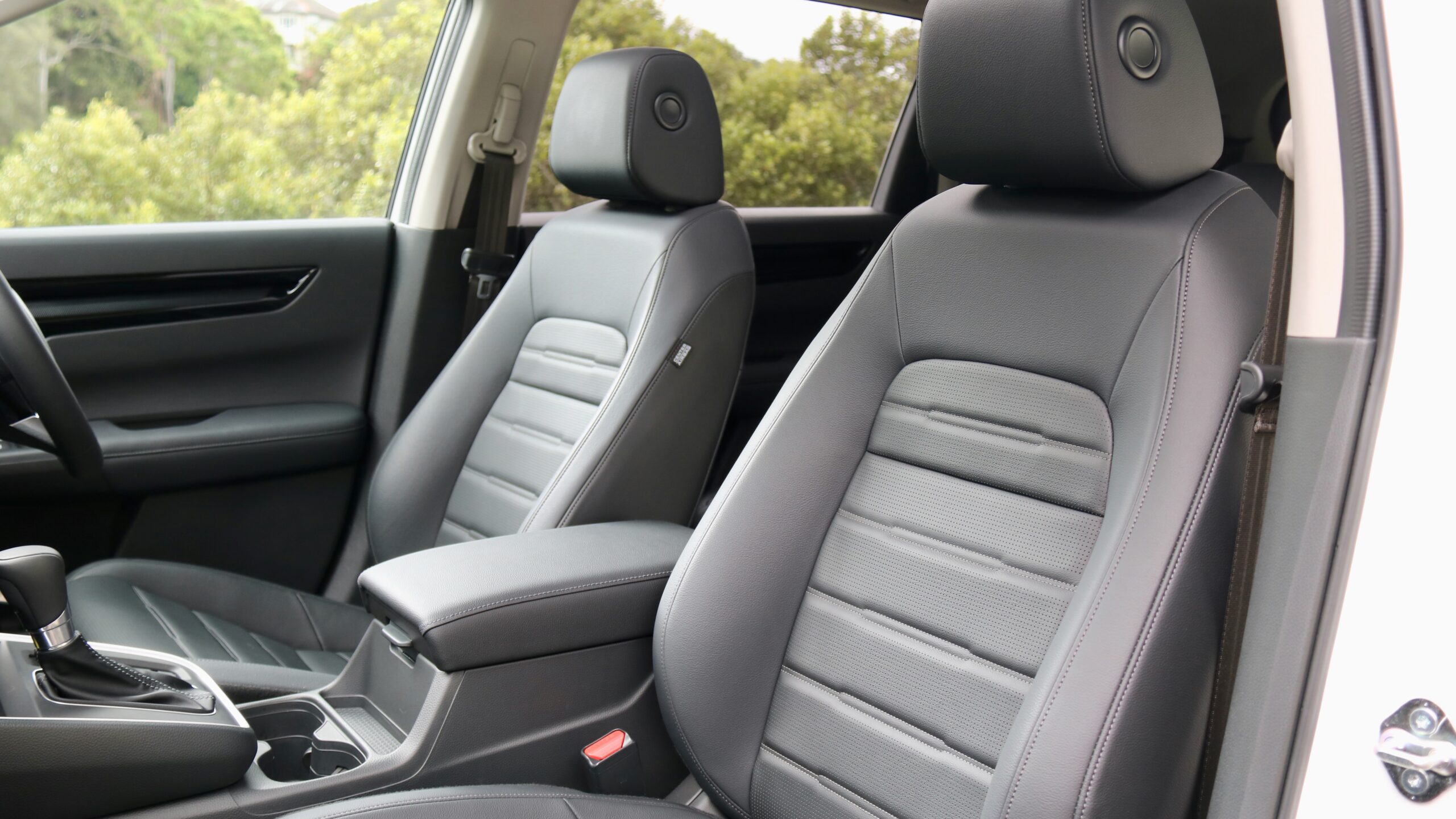
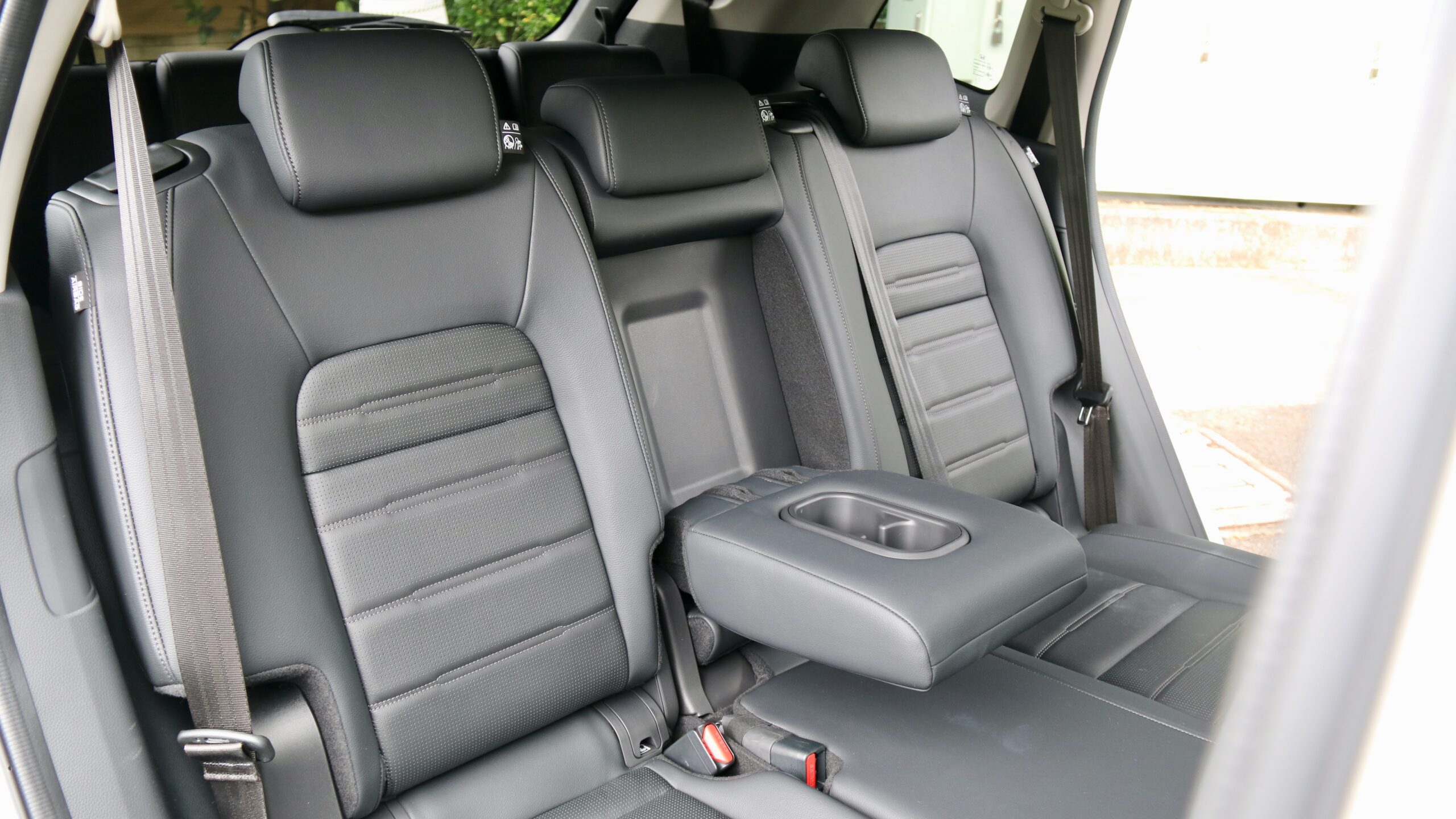
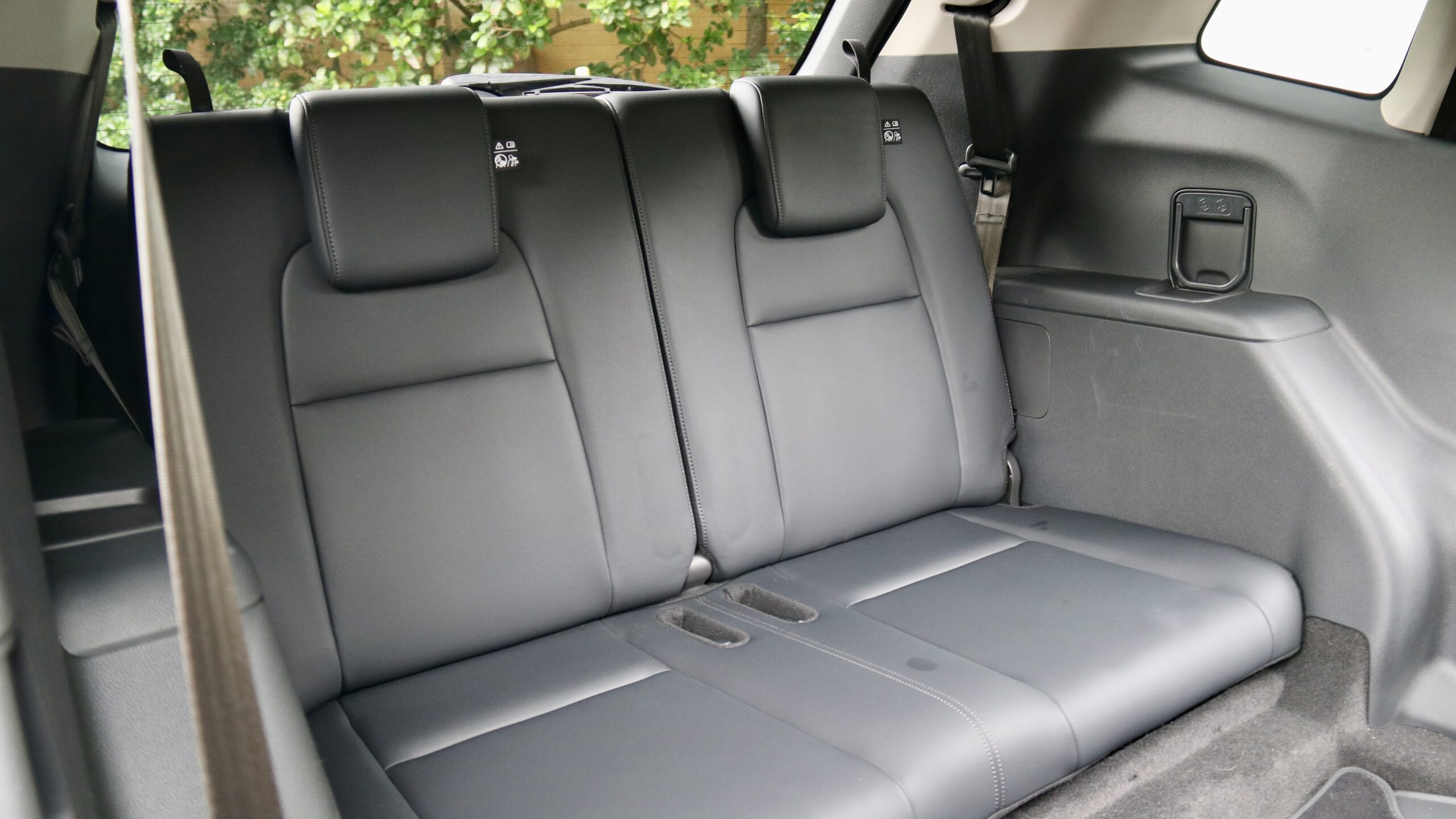
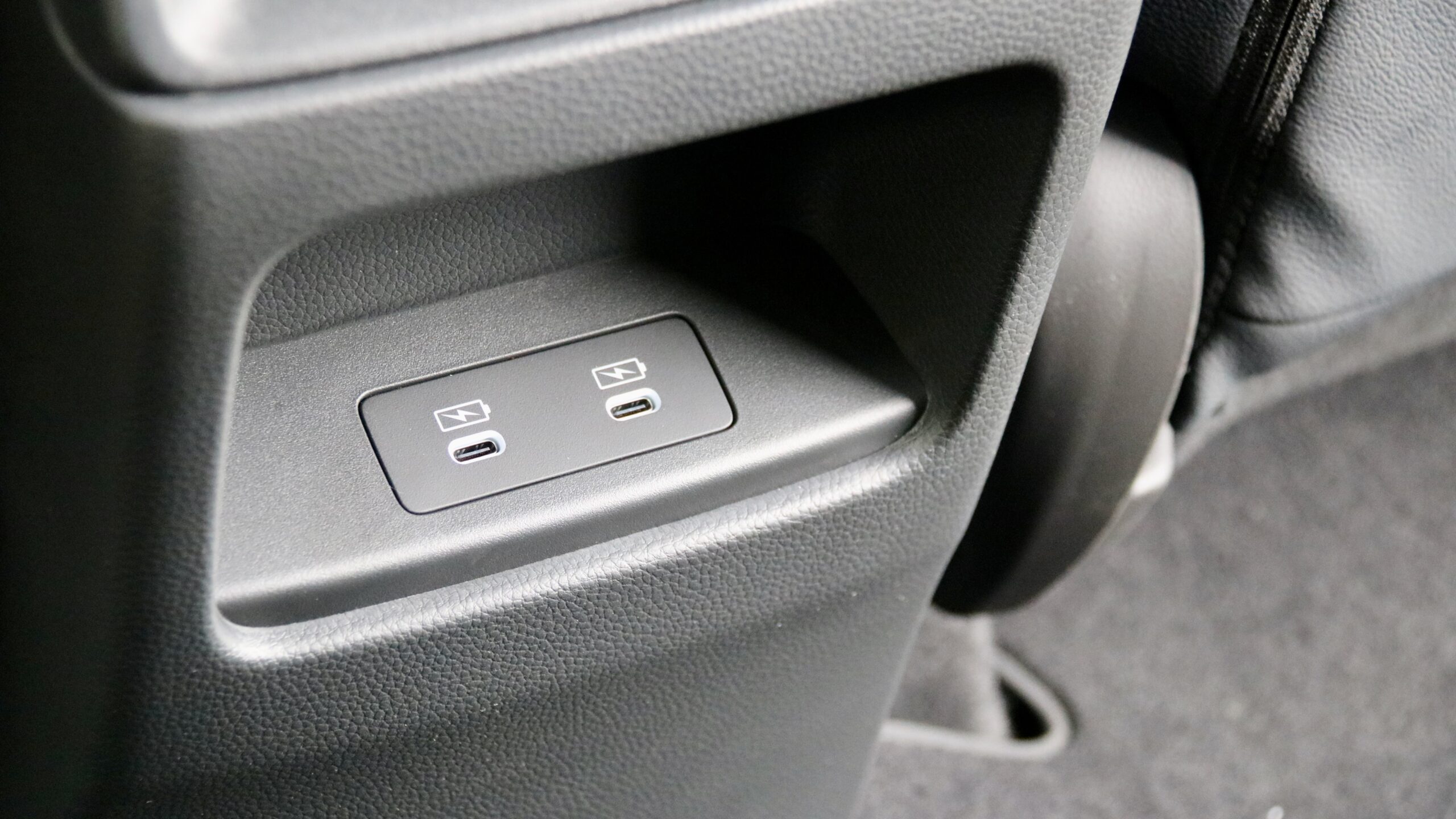
Centre of the CR-V’s cabin is the same 9.0-inch touchscreen that features in the HR-V, ZR-V and Civic range. It features satellite navigation, wireless Apple CarPlay and wired Android Auto, digital radio and live services with over-the-air updates and remote app functionality. It’s a generally pretty good system with a quick reaction to touch, easy to use menus and bright colouring, though we’d like the screen quality to be a bit better. The wireless Apple CarPlay also worked flawlessly in our time with it.
The middle row seat of the CR-V is quite practical, quite comfortable and features a lot of kit. The room on offer is excellent, even for taller adults – the legroom and headroom are plentiful, even despite the standard panoramic sunroof. The windows are large and the doors open to 90-degrees, which is very helpful for loading kids into the back. As for features, the seats recline and slide, while there are also air vents, a separate climate control zone, two USB-C ports, two map pockets, a centre arm rest with cupholders, door pockets and for child seats, two ISOFIX points and three top-tether points for child seats. Sliding the seats forward to give access to the third row is easy and gives surprising amount of space for occupants to get into the third row.
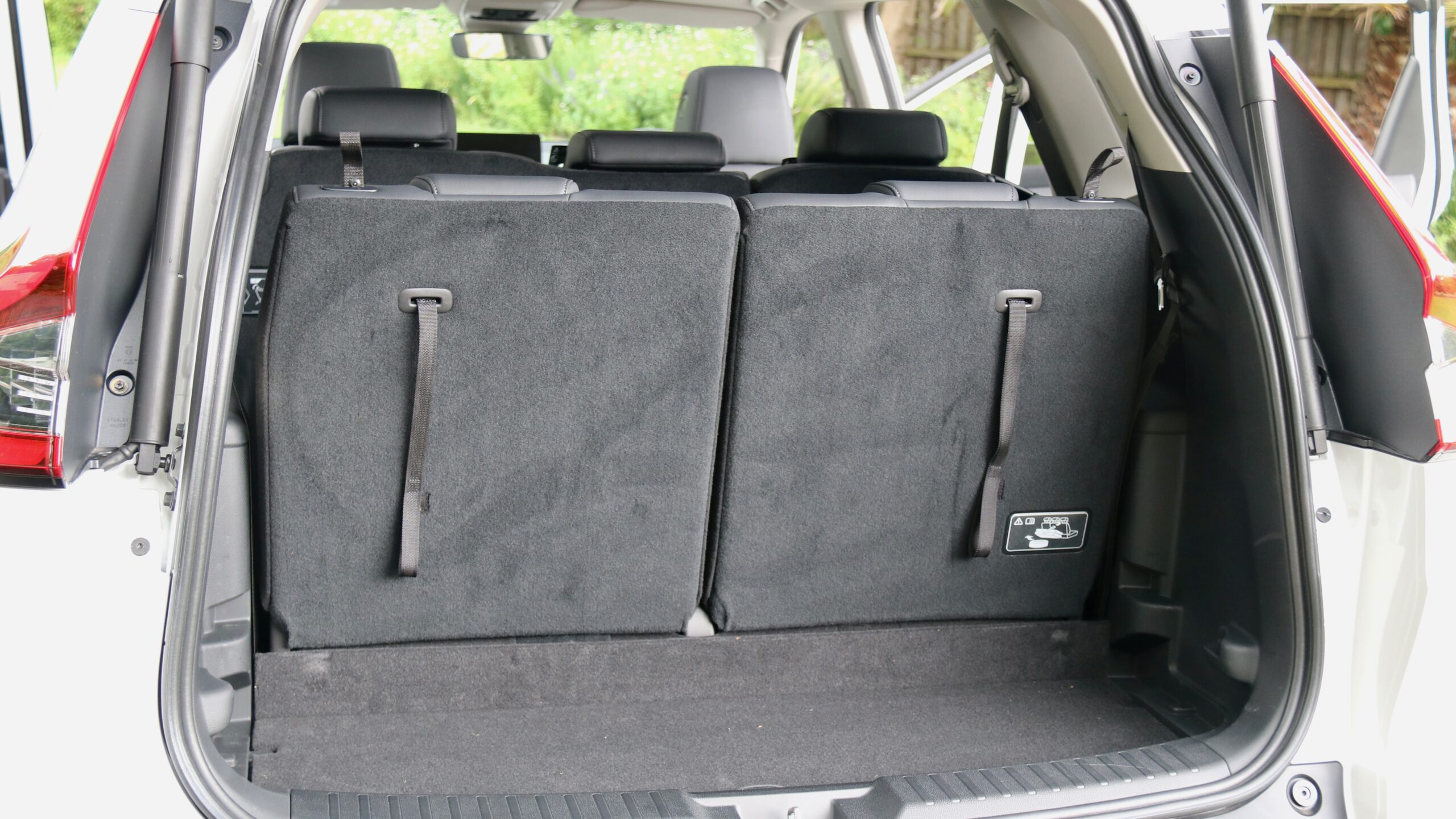
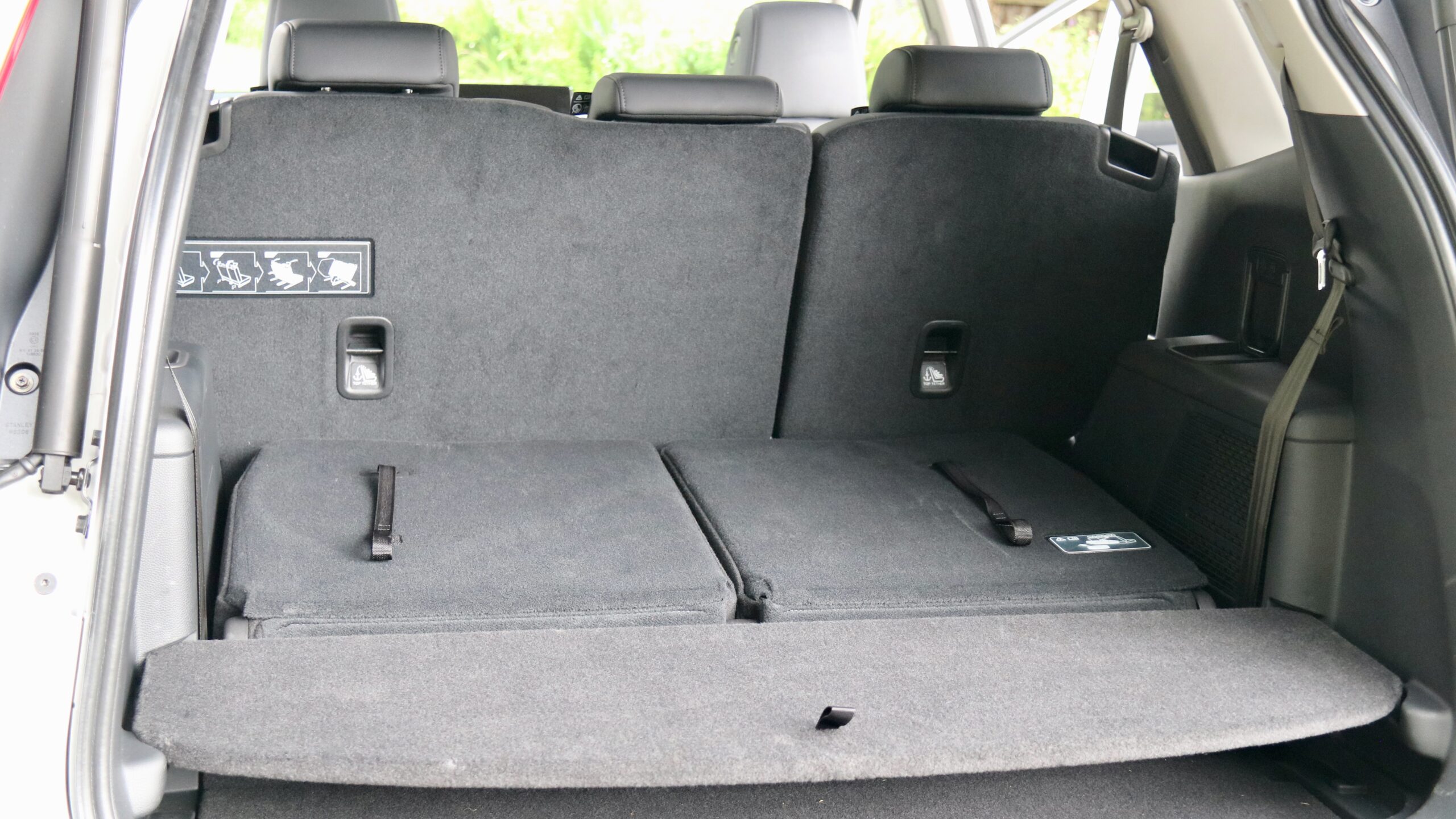
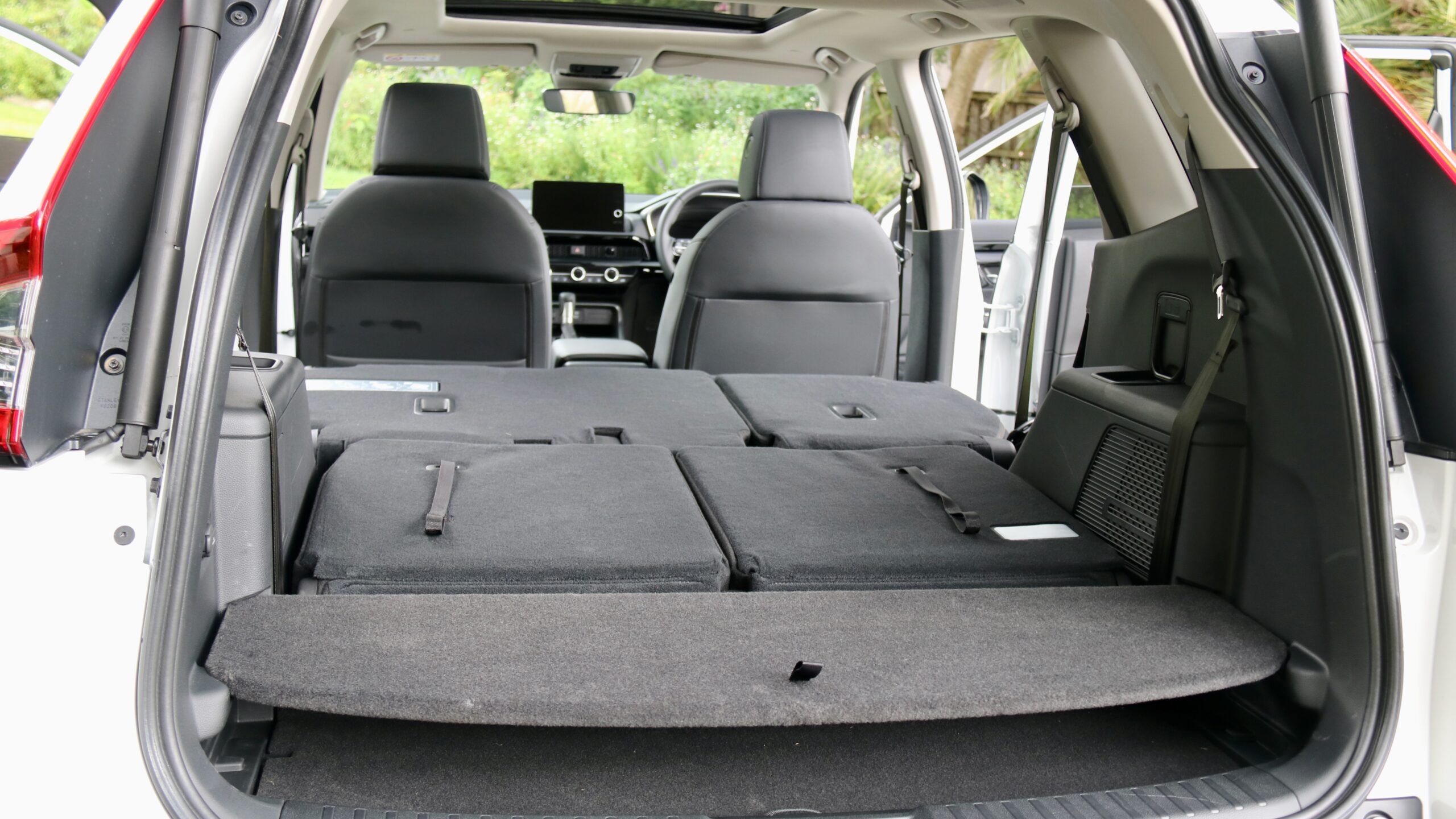
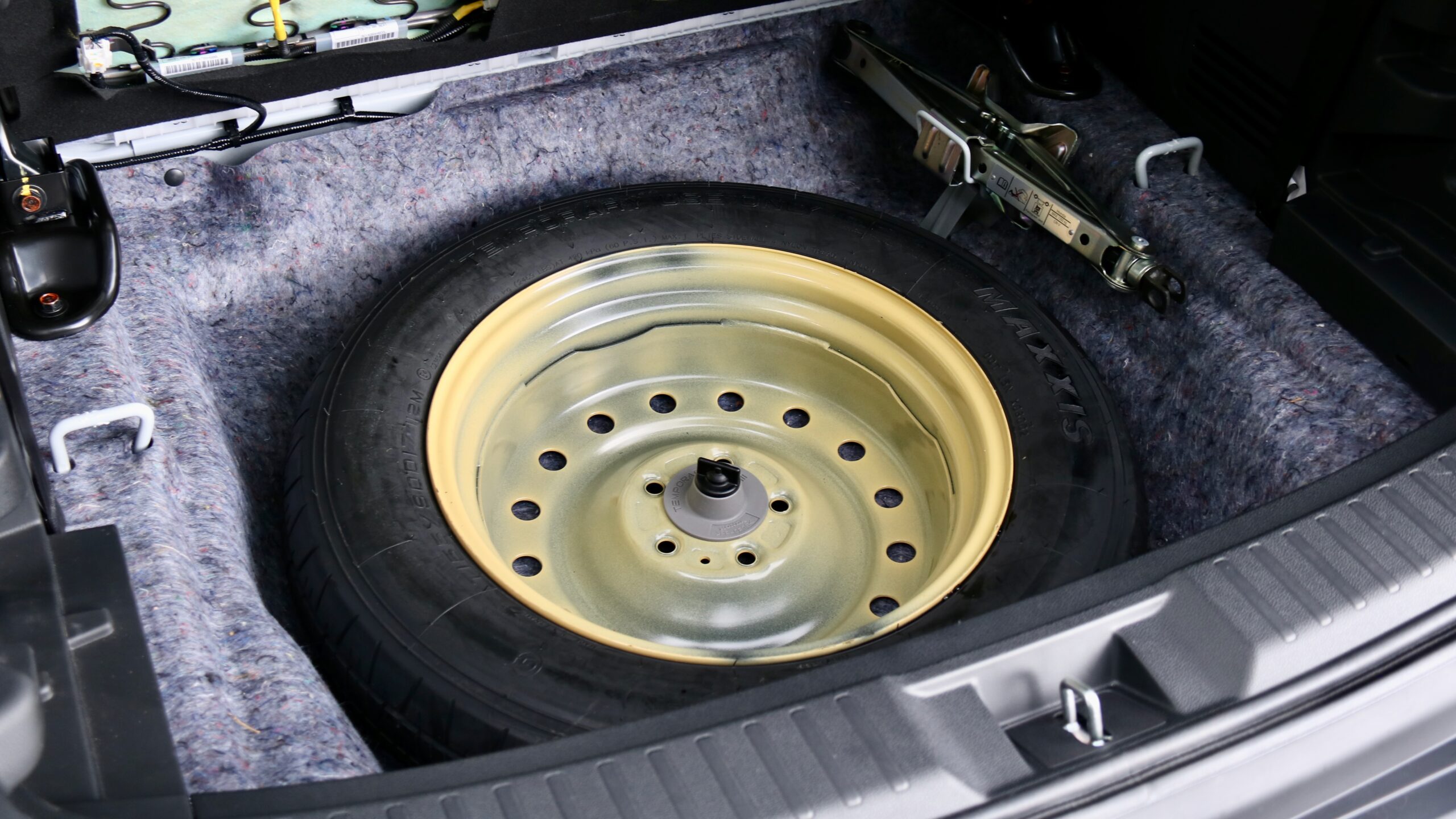
The third row of the CR-V VTi L7 is not the biggest third row of seating on the market, but it’s roomy for the segment. With the middle row slid forward, it’s possible to fit two six-footers for short trips and kids will be fine. The third row is covered by curtain airbags, while there are also air vents in the roof and cup holders, though no charging ports. It’s certainly more spacious than the Outlander and X-Trail, and a big improvement on the old CR-V.
The boot of the 2024 Honda CR-V e:HEV RS measures 150-litres with all the seats up, 478L with the third row folded and 1,457L with both rows folded – that’s quite similar to the Outlander, which offers 163L/478L/1,461L. There are a few clever features like hooks and under-floor storage, while the seats fold completely flat – though there is an annoying step in the boot floor when the seats are folded, which Honda has tried to fix with a removable shelf. Under the second boot floor is a space-saver spare wheel. The electric tailgate can also handily close by walking away from it, which we think all cars should feature.
What warranty covers the 2024 Honda CR-V VTi L7?
As with other new Honda products in Australia, the 2024 Honda CR-V VTi L7 is covered by a five-year/unlimited km warranty with five years of roadside assistance and five years of cheap servicing at $199 per service so five years/50,000km of servicing costs just $995. At the time of writing as well, Honda Australia is offering a seven years of warranty and roadside assistance to CR-V buyers if their contract is signed by 31 March 2024.
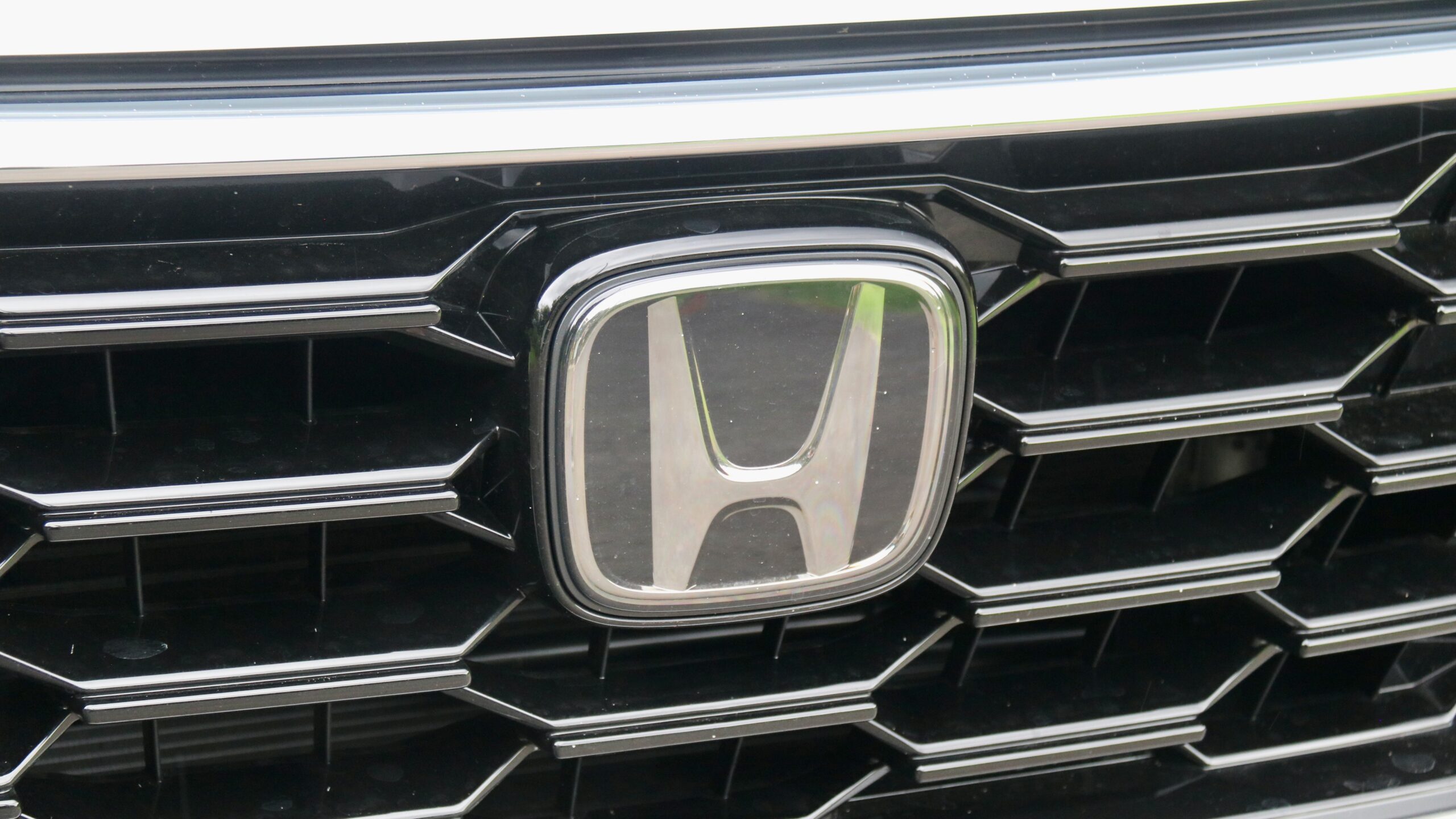
Honda’s warranty package matches Nissan’s and just bests Mitsubishi’s standard offering because it’s only to 100,000km, though if the Outlander is serviced through a Mitsubishi dealership, its warranty lasts up to 10 years or 200,000km in total. The X-Trail shares the CR-V’s intervals and five years/50,000km of servicing costs $2,324 ($464 per service), though buyers can choose a pre-paid plan at the time of purchase for $2,092. The Outlander’s intervals – despite sharing an engine with the X-Trail – are longer at once-yearly/every 15,000km and five years/75,000km of servicing costs $1,700 ($340 per service).
Should I buy a 2024 Honda CR-V VTi L7?
Overall, it’s difficult not to see the appeal of the 2024 Honda CR-V VTi L7 for families who need two extra seats for less-than-permanent use. It takes the five-seater model’s qualities – the roomy cabin with thoughtful design, good value for money, cheap servicing, solid driving experience and well-tuned active safety equipment – and adds another level of practicality. It’s easy to see why ‘5+2’ seater SUVs sell well locally as they provide extra practicality for when it’s needed, but not the extra size of a larger SUV.
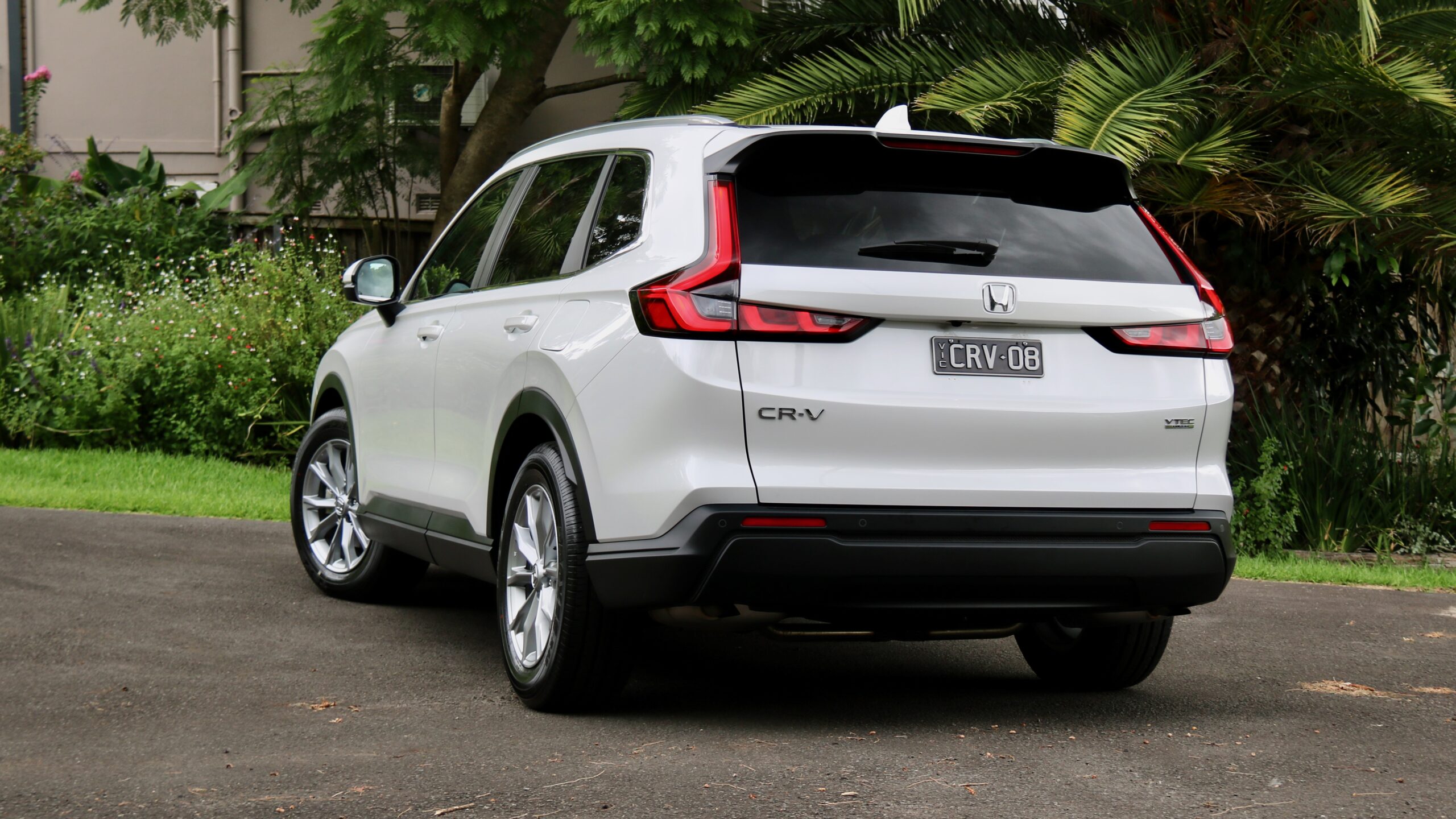
Counting against the CR-V VTi L7 are the following foibles: its third row isn’t huge, despite being the top-spec seven-seat CR-V it’s still lacking features like auto-folding mirrors and a 360-degree camera and annoyingly for some buyers, both all-wheel drive and hybrid drivetrain options are not offered for the seven-seat CR-V. But those issues aside, we think the new CR-V is a great product and if you’re after a mid-size SUV, it must be on your test drive list.
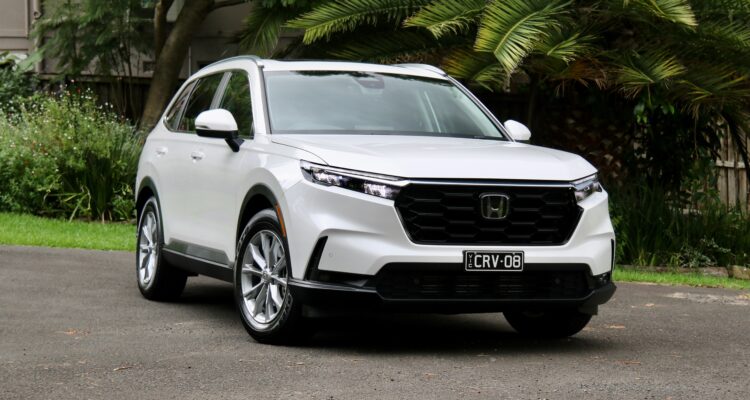
Leave a Reply